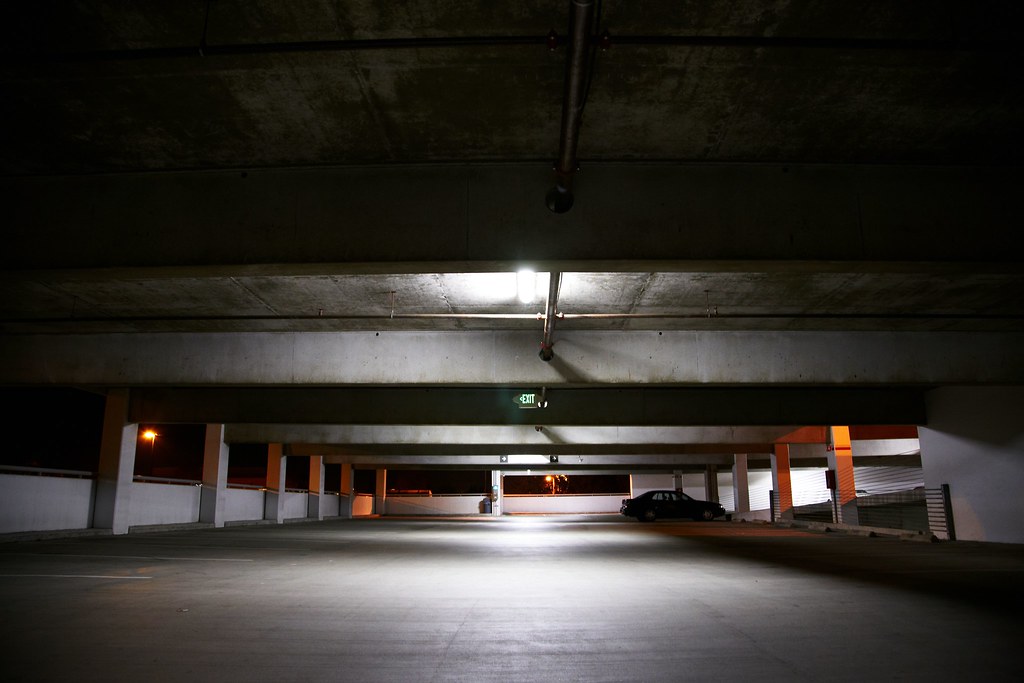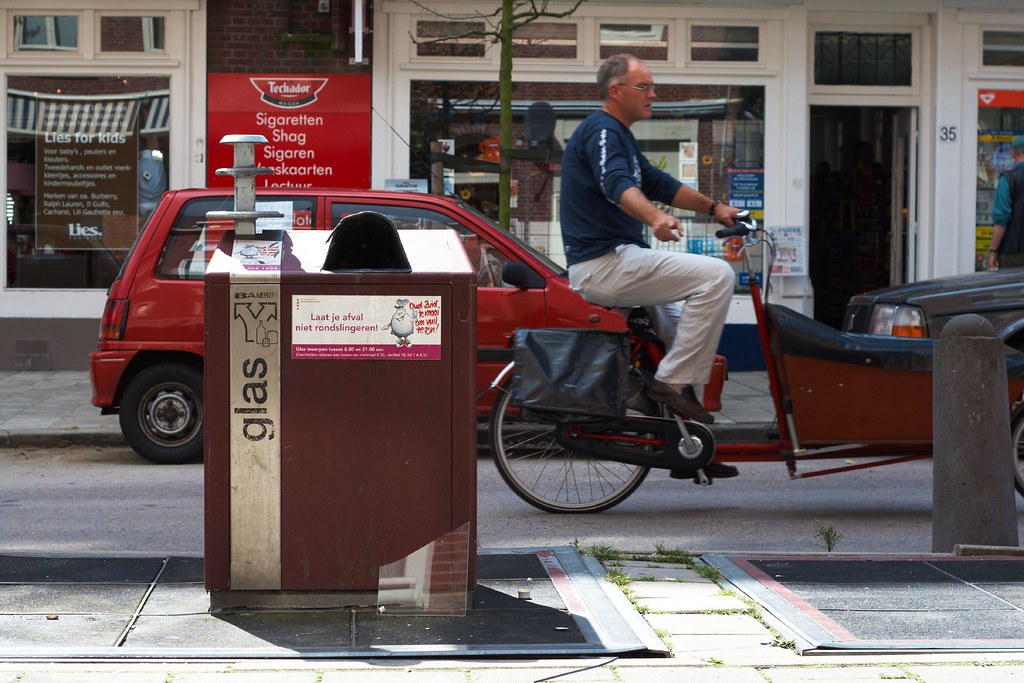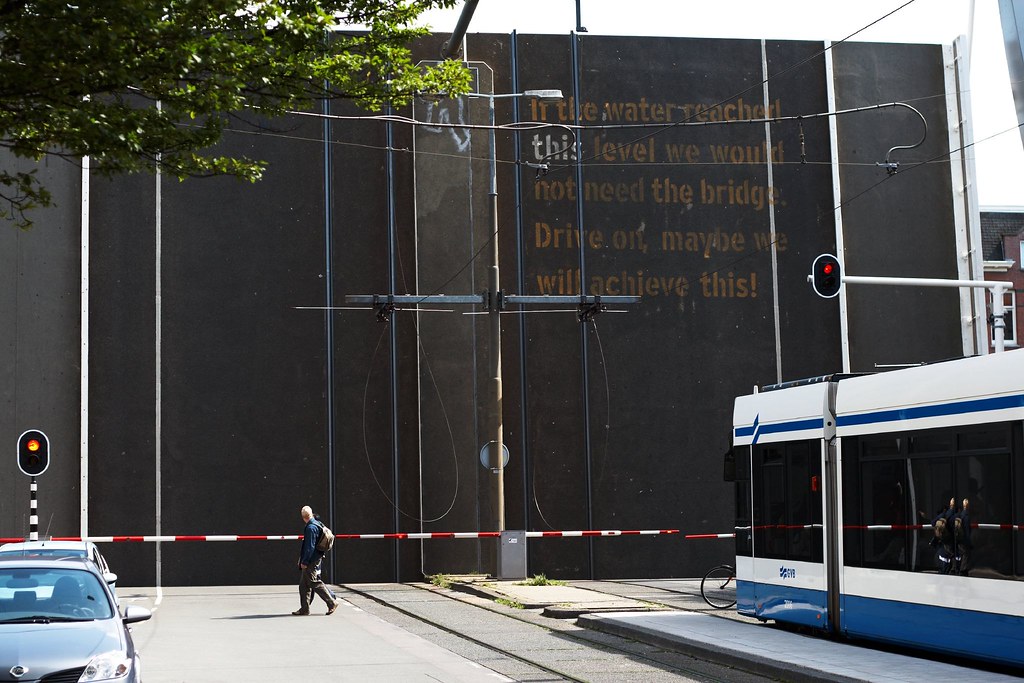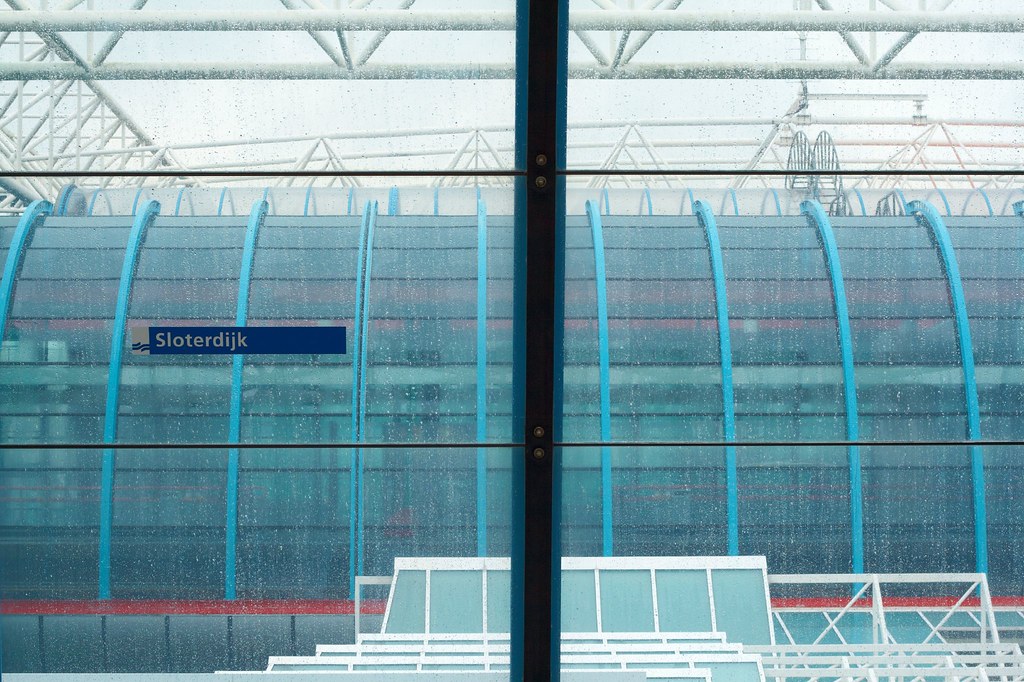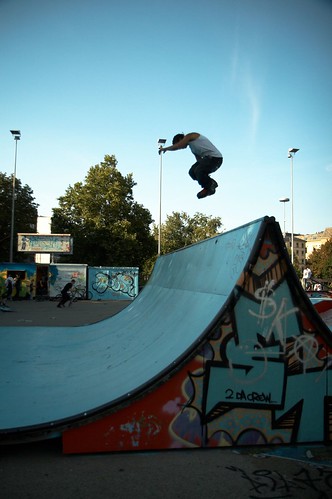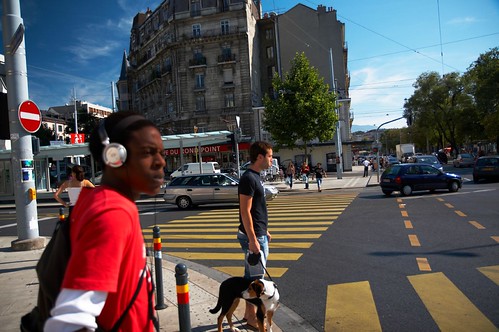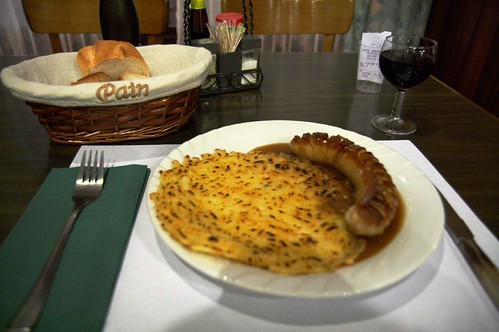Dec 14, 2008
Advent conspiracy.
Here's an awfully un-timely video given the struggling economy. I think there's still hope that Christmas will be more than just another consumer holiday when people don't feel like spending. While I have enjoyed shopping for my cousins (as tough as that could be at times), and I admire thoughtfully purchased gifts, I've noticed that I've somewhat missed out on the Christmas spirit in the past few years, given all the rush and commotion (though the family time is always excellent).
So hopefully I'll do something about that this year.
RAW workflow: Lightroom 2
Most RAW workflow apps were developed by smaller companies focused on the needs of photographers. When Adobe came out with Lightroom 1.0 early in 2007, ir validated the market, confirming that Photoshop alone didn't meet the needs of professional or advanced amateur photographers. I had toyed with the Lightroom 1 beta release. It was slow and didn't much impetus to switch over. However, through various releases, bugs were fixed and performance improved. At $299, Lightroom 2 is priced less the Capture One 4 PRO, but still double the price of Capture One 4 or Bibble Pro.
Lightroom operates in one of 5 modes, Library, Develop, Slideshow, Print, Web. This structure forces you into a certain workflow. First, in the Library mode, you "import" your images, after which you can quickly browse and make your edit. Lightroom offers a number of tools to aid in organizing photos, including the ability to add tags to images and search with them, as well as "smart collections" that can update themselves. I was able to easily create a smart collection of all photos within a date range that were rated 3 and above. After I finished rating my photos, this folder automatically contained all the files that fit the rule. I don't have a habit of tagging images, so I haven't done this.
After you have your edit, you can move on to the Develop mode, where all the postprocessing tools are provided. In addition to having all the basic tools that I'm familiar with in C1, there's a number of new tools, all potentially useful for creative manipulation, but which also give you power to violate your sense of "journalistic integrity". Advanced colour controls let you tweak particular colours, for example you can make your oranges redder without affecting your blues or greens. Split toning allows you to modify the colours of your bright and dark areas separately. There are tools to fix chromatic aberration and vignetting flaws in your lenses (available in C1 PRO), although some people (like wedding photographers) may choose to use this to add some vignetting for that vintage effect.
The most standout features though, are the tools that allow you to manipulate a small area of your image, something that Photoshop does effortlessly, but are unavailable in C1. Use the clone/healing tool to get rid of a spot of dust here or a pimple there (available in Bibble). Or do some dodging/burning by changing the brightness, contrast, saturation or sharpness of one little area of your image (unavailable in Bibble). These aren't as full-featured as they are in Photoshop, but having them built in means there's much less reason that you would actually need to start up Photoshop at all.
One other thing I like about Lightroom is the availability of Presets. You can save a certain set of settings and name them, say "Super Contrasty" or "Way Oversaturated" or "Fake Lomo", which will then appear in an organized list on the left. You can then select them to apply to your image. In C1 and Bibble you can mimic the functionality with some clunky methods, either by saving presets to file and reloading them (takes a lot more moouse clicks), or having "template" images with your presets applied, and copy from them later. However, the real magic they can't emulate; when you mouse over the names of the presets in the list, the effect is shown practically immediately on a preview image. You don't even need to you click, just move your mouse up and down and decide extremely quickly what preset you want. Potentially huge time saver.
My biggest gripe with the Develop mode is that you can only manipulate one image at a time. For example, you can't select a bunch of images and apply a Preset to all of them. Now, it's possible to do this in the Library mode, so all is not lost. It is annoying however, to have to switch between modes to do this, and it was not at all intuitive.
When I'm done processing my images, I select the ones I want to convert to JPEG, and use the File\Export option to convert to JPEG. It's pretty convenient, especially since you can create Presets on where and how you'd like your files exported. There's also plugins available that can do stuff like automatically upload your photos to flickr or smugmug with the tags you added while editing in the Library mode. There's also three modes, Slideshow, Print, and Web for creating ways of presenting your images. Right now, I'm done when I export to JPEG, so I haven't used any of these modes.
Overall Lightroom 2 was the favourite of the apps I tried. The features are great, it's quick and responsive, the layout is easy to use and is mostly intuitive. The only drawback really is the price, but if you can get a student discount or a similar deal, it's a good way to go. As a last random thought, one way to increase your productivity in any of these workflow apps is to learn to use hotkeys instead of clicking through menus and options with your mouse. Common hotkeys get picked up fairly quickly with use, once you know what they are, but there's probably enough in any of these apps that you won't memorize them all immediately. One thing about Lightroom is that there's only one must-remember hotkey, Ctrl-/, which will bring up a well-organized list of the hotkeys available in the current mode. It's just one more example how the UI design of this app is so well polished.
Lightroom operates in one of 5 modes, Library, Develop, Slideshow, Print, Web. This structure forces you into a certain workflow. First, in the Library mode, you "import" your images, after which you can quickly browse and make your edit. Lightroom offers a number of tools to aid in organizing photos, including the ability to add tags to images and search with them, as well as "smart collections" that can update themselves. I was able to easily create a smart collection of all photos within a date range that were rated 3 and above. After I finished rating my photos, this folder automatically contained all the files that fit the rule. I don't have a habit of tagging images, so I haven't done this.
After you have your edit, you can move on to the Develop mode, where all the postprocessing tools are provided. In addition to having all the basic tools that I'm familiar with in C1, there's a number of new tools, all potentially useful for creative manipulation, but which also give you power to violate your sense of "journalistic integrity". Advanced colour controls let you tweak particular colours, for example you can make your oranges redder without affecting your blues or greens. Split toning allows you to modify the colours of your bright and dark areas separately. There are tools to fix chromatic aberration and vignetting flaws in your lenses (available in C1 PRO), although some people (like wedding photographers) may choose to use this to add some vignetting for that vintage effect.
The most standout features though, are the tools that allow you to manipulate a small area of your image, something that Photoshop does effortlessly, but are unavailable in C1. Use the clone/healing tool to get rid of a spot of dust here or a pimple there (available in Bibble). Or do some dodging/burning by changing the brightness, contrast, saturation or sharpness of one little area of your image (unavailable in Bibble). These aren't as full-featured as they are in Photoshop, but having them built in means there's much less reason that you would actually need to start up Photoshop at all.
One other thing I like about Lightroom is the availability of Presets. You can save a certain set of settings and name them, say "Super Contrasty" or "Way Oversaturated" or "Fake Lomo", which will then appear in an organized list on the left. You can then select them to apply to your image. In C1 and Bibble you can mimic the functionality with some clunky methods, either by saving presets to file and reloading them (takes a lot more moouse clicks), or having "template" images with your presets applied, and copy from them later. However, the real magic they can't emulate; when you mouse over the names of the presets in the list, the effect is shown practically immediately on a preview image. You don't even need to you click, just move your mouse up and down and decide extremely quickly what preset you want. Potentially huge time saver.
My biggest gripe with the Develop mode is that you can only manipulate one image at a time. For example, you can't select a bunch of images and apply a Preset to all of them. Now, it's possible to do this in the Library mode, so all is not lost. It is annoying however, to have to switch between modes to do this, and it was not at all intuitive.
When I'm done processing my images, I select the ones I want to convert to JPEG, and use the File\Export option to convert to JPEG. It's pretty convenient, especially since you can create Presets on where and how you'd like your files exported. There's also plugins available that can do stuff like automatically upload your photos to flickr or smugmug with the tags you added while editing in the Library mode. There's also three modes, Slideshow, Print, and Web for creating ways of presenting your images. Right now, I'm done when I export to JPEG, so I haven't used any of these modes.
Overall Lightroom 2 was the favourite of the apps I tried. The features are great, it's quick and responsive, the layout is easy to use and is mostly intuitive. The only drawback really is the price, but if you can get a student discount or a similar deal, it's a good way to go. As a last random thought, one way to increase your productivity in any of these workflow apps is to learn to use hotkeys instead of clicking through menus and options with your mouse. Common hotkeys get picked up fairly quickly with use, once you know what they are, but there's probably enough in any of these apps that you won't memorize them all immediately. One thing about Lightroom is that there's only one must-remember hotkey, Ctrl-/, which will bring up a well-organized list of the hotkeys available in the current mode. It's just one more example how the UI design of this app is so well polished.
Dec 12, 2008
Dubious achievement.
I don't recall the last time I've been at work this late. But maybe it means I'm back to being focused. Now, I better leave early tomorrow.
Dec 9, 2008
Here's to consolation.
Dec 5, 2008
RAW workflow: Capture One 4.1
Phase One is a Danish company that manufactures high end digital "backs" for medium format cameras, systems that cost halfway into the five digits. They've also been developing Capture One (C1), RAW workflow software for both their cameras as well as popular digital SLRs. They've been releasing their full featured "professional" version, as well as a less expensive and dumbed down "consumer" version.
I bought Capture One LE (the consumer version) for $99 in 2004, and have been using it, along with free upgrade versions, since. The current consumer version is simply called Capture One 4 ($129), whereas the full-fledged version is Capture One PRO ($399). Although I've tried the demo of the pro version a few years ago, I've been using the consumer version, and the notes here reflect Capture One 4.1 (though now a more recent 4.5 release is now available). I definitely have a bias since I've grown used to C1's way of doing things, though that's probably had some negative influence as well.
The first step in RAW processing is to select images. At the very least, you need to be able to browse all the images available to select the single image, or the set of images you actually want to spend time working on, a process called "editing". When editing you need to be able to view many files at once, but you also need to able to zoom into an image to check the details. Sometimes you may also need to be able to view two or three images onscreen, but also in close enough detail to be able to compare side by side. Being able to do zoom in and out and switch between images exteremely quickly is key. Often it only takes a moment to determine whether an image catches you, but if it takes a few seconds to switch between views, the task of editing may take many times longer, a problem when you have hundreds of images to sort through. Although C1 4.x (built on .NET, at least for Windows) takes somewhat longer to start up than the older 3.x versions, it's still reasonably responsive when changing images or zoom.
When I edit in C1, I typically keep my hands on the keyboard, using the arrow keys to switch back and forth between images, and the number keys 1-5 to "rate" each image. When I'm done rating, I just sort the images by their rating, and decide where the cutoff point is. What C1 does not offer is an organizational tool for keeping track of a vast library of images. You cannot tag images with keywords, or search for particular images, or filter them by criteria (other than by sorting). Although C1 does allow you to create "albums" of images, they only exist within the application. Consequently, I haven't tagged or "organized" my archive of images, although I have organized them by date taken (outside of C1).
Photoshop is the gorilla standard of image processing applications. RAW workflow apps seem to know better than to compete; most focus on the basic tools that photographers use the majority of the time. Since I "grew up" on C1, I've managed to get by using the limited set of processing tools it provides. One tradeoff from having fewer possible tools is that it's easier to and quicker to switch between the few tools you have, or to be able to have the majority of them be displayed onscreen at the same time, as opposed to constantly having to switch between menus to get things done. One of the things I still like a lot about C1 is its simple and uncluttered UI that gives quick access to most tools without the need to search around much.
C1 lets you process whichever image you have selected while browsing, so you are free to adjust your processing even as you "edit". I've found this works well when you have a few images to go through, though when you have large sets, I find it easier to finish the edit first before going back through and processing your edit. I find myself using most of the tools provided in C1. I almost always use the curves and saturation controls, exposure and white balance whenever required. I crop a significant fraction of my images, but always with the same width to height ratio as the original image. I use the sharpening and noise reduction as they are applied, but I usually leave them fixed to a setting and almost never play with them, unless the noise is exceptionally bad. C1 3.x did not support arbitrary rotation (except in the expensive pro version) so I got by without it. Since it's been introduced, I've found it very useful in straightening slightly crooked pictures, but I wonder if it's simply encouraged to be lazier and less precise. The other recent addition has been to C1 4.x has been the high dynamic range tools to recover blown highlights and underexposed shadows. I'm extremely grateful that these are available when needed.
I find the quality of the output generally acceptable. The one exception is that when the noise reduction is turned up high on noisy data, one sometimes gets extremely muddy output tha tis pretty much unusable.
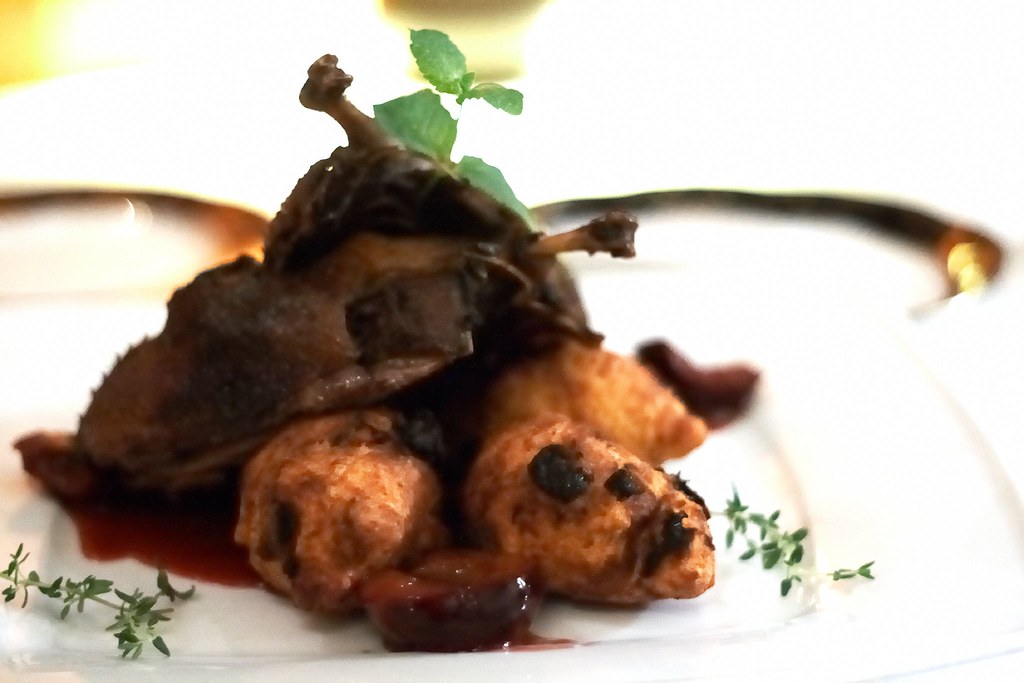
When generating output, C1 has options for formats (JPEG, TIFF, DNG), scaling, output location, colour profile to apply, and an option to launch a another app when the conversion is done. To generate output in C1, you first select an output directory. After that's done any image you view can quickly be "queued" to generate output in the background. The queue can either be running as you edit and process, or if your computer is slow, you can focus on processing, and have the queue run after you're done and you can let the computer crank away. Personally, I haven't had any problems with the queue running. I generally like this process since it's very convenient to generate output, and most of the time when I'm done editing and processing, the queue has often almost completed operating on my images. Earlier 3.x versions of C1 allowed you to specify that the output directory always be a subdirectory of the current image's directory, a system that worked well for me. This was removed in 4.1, meaning that I would have to manually create and select the output directory every time I switched to images in a new directory.
My current biggest grip with C1 is that it will generate a directory for temporary files (ie thumbnails, etc.) called CaptureOne in each directory that you work in, and it leaves this directory lying around. Since these are fairly large, I find myself cleaning them up fairly often. It would be great of the app had an option to clean these all up automatically (even though that implies losing track of your changes).
I'll probably continue to use C1 simply because I've already paid for it and am using it legally. It's reasonably functional and the drawback aren't too severe. It is however, currently outclassed by the competition.
I bought Capture One LE (the consumer version) for $99 in 2004, and have been using it, along with free upgrade versions, since. The current consumer version is simply called Capture One 4 ($129), whereas the full-fledged version is Capture One PRO ($399). Although I've tried the demo of the pro version a few years ago, I've been using the consumer version, and the notes here reflect Capture One 4.1 (though now a more recent 4.5 release is now available). I definitely have a bias since I've grown used to C1's way of doing things, though that's probably had some negative influence as well.
The first step in RAW processing is to select images. At the very least, you need to be able to browse all the images available to select the single image, or the set of images you actually want to spend time working on, a process called "editing". When editing you need to be able to view many files at once, but you also need to able to zoom into an image to check the details. Sometimes you may also need to be able to view two or three images onscreen, but also in close enough detail to be able to compare side by side. Being able to do zoom in and out and switch between images exteremely quickly is key. Often it only takes a moment to determine whether an image catches you, but if it takes a few seconds to switch between views, the task of editing may take many times longer, a problem when you have hundreds of images to sort through. Although C1 4.x (built on .NET, at least for Windows) takes somewhat longer to start up than the older 3.x versions, it's still reasonably responsive when changing images or zoom.
When I edit in C1, I typically keep my hands on the keyboard, using the arrow keys to switch back and forth between images, and the number keys 1-5 to "rate" each image. When I'm done rating, I just sort the images by their rating, and decide where the cutoff point is. What C1 does not offer is an organizational tool for keeping track of a vast library of images. You cannot tag images with keywords, or search for particular images, or filter them by criteria (other than by sorting). Although C1 does allow you to create "albums" of images, they only exist within the application. Consequently, I haven't tagged or "organized" my archive of images, although I have organized them by date taken (outside of C1).
Photoshop is the gorilla standard of image processing applications. RAW workflow apps seem to know better than to compete; most focus on the basic tools that photographers use the majority of the time. Since I "grew up" on C1, I've managed to get by using the limited set of processing tools it provides. One tradeoff from having fewer possible tools is that it's easier to and quicker to switch between the few tools you have, or to be able to have the majority of them be displayed onscreen at the same time, as opposed to constantly having to switch between menus to get things done. One of the things I still like a lot about C1 is its simple and uncluttered UI that gives quick access to most tools without the need to search around much.
C1 lets you process whichever image you have selected while browsing, so you are free to adjust your processing even as you "edit". I've found this works well when you have a few images to go through, though when you have large sets, I find it easier to finish the edit first before going back through and processing your edit. I find myself using most of the tools provided in C1. I almost always use the curves and saturation controls, exposure and white balance whenever required. I crop a significant fraction of my images, but always with the same width to height ratio as the original image. I use the sharpening and noise reduction as they are applied, but I usually leave them fixed to a setting and almost never play with them, unless the noise is exceptionally bad. C1 3.x did not support arbitrary rotation (except in the expensive pro version) so I got by without it. Since it's been introduced, I've found it very useful in straightening slightly crooked pictures, but I wonder if it's simply encouraged to be lazier and less precise. The other recent addition has been to C1 4.x has been the high dynamic range tools to recover blown highlights and underexposed shadows. I'm extremely grateful that these are available when needed.
I find the quality of the output generally acceptable. The one exception is that when the noise reduction is turned up high on noisy data, one sometimes gets extremely muddy output tha tis pretty much unusable.

When generating output, C1 has options for formats (JPEG, TIFF, DNG), scaling, output location, colour profile to apply, and an option to launch a another app when the conversion is done. To generate output in C1, you first select an output directory. After that's done any image you view can quickly be "queued" to generate output in the background. The queue can either be running as you edit and process, or if your computer is slow, you can focus on processing, and have the queue run after you're done and you can let the computer crank away. Personally, I haven't had any problems with the queue running. I generally like this process since it's very convenient to generate output, and most of the time when I'm done editing and processing, the queue has often almost completed operating on my images. Earlier 3.x versions of C1 allowed you to specify that the output directory always be a subdirectory of the current image's directory, a system that worked well for me. This was removed in 4.1, meaning that I would have to manually create and select the output directory every time I switched to images in a new directory.
My current biggest grip with C1 is that it will generate a directory for temporary files (ie thumbnails, etc.) called CaptureOne in each directory that you work in, and it leaves this directory lying around. Since these are fairly large, I find myself cleaning them up fairly often. It would be great of the app had an option to clean these all up automatically (even though that implies losing track of your changes).
I'll probably continue to use C1 simply because I've already paid for it and am using it legally. It's reasonably functional and the drawback aren't too severe. It is however, currently outclassed by the competition.
Nov 30, 2008
RAW workflow, an introduction
Back in August I was thinking of doing an informal review of the various RAW workflow applications out there to determine which one would suit me best. I figured with three months off, I'd have plenty of time to do a writeup; I'm not sure how that never came to fruition. Hopefully I still remember enough to come up with something moderately useful in the next few installments. I definitely do not recall enough for a comprehensive review; my methods were neither stringent nor controlled.
Before jumping in, this is an introduction for beginners. What is RAW? Why should I use it? What's the difference between RAW workflow software and Photoshop?
The first digital camera I had, the Canon G1 in 2000, could save files to either RAW or JPEG format. At the time, I couldn't quite figure out the benefit of using RAW files. They were bigger, and they were a pain to "process" on the computer before I could post them online or do anything with them. This recent (and in my opinion, heavily flawed) comparison of the two options reflected my thinking back then: JPEG were easier to post online, RAW files were a hassle and used up all the space on my 128MB CF card. However, when I got my for dSLR, I spent more time playing with RAW, looked into RAW workflow software and eventually moved to shooting RAW exclusively.
The JPEG format was standardized in 1994, and is pretty much the standard for photos stored and displayed online. Pretty much every camera can save its images as a JPEG. JPEG uses a "lossy" compression format, meaning that it will drop detail information to make a smaller file. Most cameras have some quality settings for JPEG to balance the file size and detail level. At the highest quality level, detail is not a problem with JPEG. The primary issue with JPEG is that the range of possible colour values for each pixel is limited compared to RAW. Every pixel is stored as three values representing red, green and blue. In JPEG, each of these values is an 8-bit number, meaning it can range from 0-255.
Now unlike JPEG, there isn't a single RAW format. Rather the term refers to a camera specific format that contains all the "raw" data captured from the camera's sensor, before it's compressed into JPEG. As cameras improve, the RAW files contain more and more data that ends up being lost when compressed to JPEG. On my G1, the RAW file contained 8-bits for each colour component, no better than the JPEG. On modern dSLRs though, the RAW file contains up to 14-bits for each colour, a range of 0-16383. All this extra data is lost when compressing to JPEG. The camera picks a subset out of that range for each colour in order to get the proper white balance and drops the rest. Details in very bright or very dark areas may also be lost in the compression. Camera settings such as contrast, brightness, saturation and sharpness are also applied before saving to JPEG, and cannot be fully undone. Though not available on most point-and-shoot cameras, some form of RAW is available on some high end models and pretty much all dSLRs.
The larger RAW files gives much more flexibility to save not-quite perfect photos, especially when the white balance or exposure are off. These two changes in particular are practically impossible to do well after compression to JPEG. The extra data also lends itself to better results in general with other tweaks, reducing ugly "colour banding". With 4GB CF cards costing under $20, storage is no longer a significant problem; I'd much rather be able to recover an almost-perfect shot. Although modern displays can only show JPEG's 8-bits per component, technology is on the verge of improving this within the next few years. At some point in the future, all the extra data in RAW files would likely translate to richer colours and more detail in bright and dark areas than JPEGs would ever allow.
In addition to the file size, the other primary complaint about RAW files is the time required for processing. Back in 2000, the RAW conversion software that came with my G1 let me open a .CRW (Canon RAW) file, make some tweaks, and then save a JPEG version of the image. It might take a few minutes to go through this process, but even if it took me 3 minutes a photo, then going through say 300 photos from a wedding would still take 15 hours!
This is where the RAW workflow software comes in. Instead of following your average application's model of opening a file, editing and saving (much like Word or Photoshop), workflow software is specifically designed to expedite working photographers process of converting RAW files to JPEGs (or other publishing formats).
Usually this process goes through three main phases:
1) sorting photos, applying "tags" to make them easier to search later, and selecting the photos for publishing over a set of hundreds or thousands of photos taken over a shoot (known to photographers as "editing")
2) tweaking individual image settings of the selected good photos, and changing the picture to appear as desired (known as "postprocessing")
3) converting to a final JPEG (or other format) and printing, or publishing to DVD or the Web.
Workflow applications tend to combine all 3 steps into a single application. Photoshop on the other hand, is a general image processing app, aimed not only at photographers, but also for artists, video postprocessing and editing, game developers, web designers, graphic designers, publishers and even scientist, engineers and architects. Photoshop gives you amazing capabilities for step 2, but you'll need separate applications for steps 1 and 3. Workflow software on the other hand, gives the full package, but lacks the majority of Photoshops features in step 2. You'll be able to complete common photographer postprocessing tasks that apply to the entire image very quickly, with a UI and hotkeys designed specifically for efficiency: fixing white balance, exposure, contrast, saturation, "curves", cropping, sharpenning, noise reduction. However, any "special effects" will require a more advanced processing application. You probably won't be able to do stuff like cut the ex-girlfriend out of one image or insert grandma into another, changing the colours or license plate of a car, or removing wrinkles and adjust the unevenly large right eye of your aspiring models.
On the argument of RAW processing taking a long time, you'll realize that step 1 (and perhaps 3) are steps that are required if you take JPEGs anyways. Step 2 will take significant amounts of time if you process each image individually. However, if you just stick to the automatic settings (as you would have by shooting JPEG), and convert to JPEG, it takes about an extra 6 minutes for every 100 images, which is probably manageable for most photographers.
I took a look at three apps: Phase One's Capture One 4, Adobe's Lightroom 2, and Bibble Lab's Bibble 4.10. There's a number of other contenders. Camera manufacturers each have their own RAW conversion software, which I haven't looked at. Apple has Aperture, which is available on Mac only. It's a very serious contender, but since I use Windows, I haven't taken the time to review it. Hopefully I'll have individual discussions up soon.
Before jumping in, this is an introduction for beginners. What is RAW? Why should I use it? What's the difference between RAW workflow software and Photoshop?
The first digital camera I had, the Canon G1 in 2000, could save files to either RAW or JPEG format. At the time, I couldn't quite figure out the benefit of using RAW files. They were bigger, and they were a pain to "process" on the computer before I could post them online or do anything with them. This recent (and in my opinion, heavily flawed) comparison of the two options reflected my thinking back then: JPEG were easier to post online, RAW files were a hassle and used up all the space on my 128MB CF card. However, when I got my for dSLR, I spent more time playing with RAW, looked into RAW workflow software and eventually moved to shooting RAW exclusively.
The JPEG format was standardized in 1994, and is pretty much the standard for photos stored and displayed online. Pretty much every camera can save its images as a JPEG. JPEG uses a "lossy" compression format, meaning that it will drop detail information to make a smaller file. Most cameras have some quality settings for JPEG to balance the file size and detail level. At the highest quality level, detail is not a problem with JPEG. The primary issue with JPEG is that the range of possible colour values for each pixel is limited compared to RAW. Every pixel is stored as three values representing red, green and blue. In JPEG, each of these values is an 8-bit number, meaning it can range from 0-255.
Now unlike JPEG, there isn't a single RAW format. Rather the term refers to a camera specific format that contains all the "raw" data captured from the camera's sensor, before it's compressed into JPEG. As cameras improve, the RAW files contain more and more data that ends up being lost when compressed to JPEG. On my G1, the RAW file contained 8-bits for each colour component, no better than the JPEG. On modern dSLRs though, the RAW file contains up to 14-bits for each colour, a range of 0-16383. All this extra data is lost when compressing to JPEG. The camera picks a subset out of that range for each colour in order to get the proper white balance and drops the rest. Details in very bright or very dark areas may also be lost in the compression. Camera settings such as contrast, brightness, saturation and sharpness are also applied before saving to JPEG, and cannot be fully undone. Though not available on most point-and-shoot cameras, some form of RAW is available on some high end models and pretty much all dSLRs.
The larger RAW files gives much more flexibility to save not-quite perfect photos, especially when the white balance or exposure are off. These two changes in particular are practically impossible to do well after compression to JPEG. The extra data also lends itself to better results in general with other tweaks, reducing ugly "colour banding". With 4GB CF cards costing under $20, storage is no longer a significant problem; I'd much rather be able to recover an almost-perfect shot. Although modern displays can only show JPEG's 8-bits per component, technology is on the verge of improving this within the next few years. At some point in the future, all the extra data in RAW files would likely translate to richer colours and more detail in bright and dark areas than JPEGs would ever allow.
In addition to the file size, the other primary complaint about RAW files is the time required for processing. Back in 2000, the RAW conversion software that came with my G1 let me open a .CRW (Canon RAW) file, make some tweaks, and then save a JPEG version of the image. It might take a few minutes to go through this process, but even if it took me 3 minutes a photo, then going through say 300 photos from a wedding would still take 15 hours!
This is where the RAW workflow software comes in. Instead of following your average application's model of opening a file, editing and saving (much like Word or Photoshop), workflow software is specifically designed to expedite working photographers process of converting RAW files to JPEGs (or other publishing formats).
Usually this process goes through three main phases:
1) sorting photos, applying "tags" to make them easier to search later, and selecting the photos for publishing over a set of hundreds or thousands of photos taken over a shoot (known to photographers as "editing")
2) tweaking individual image settings of the selected good photos, and changing the picture to appear as desired (known as "postprocessing")
3) converting to a final JPEG (or other format) and printing, or publishing to DVD or the Web.
Workflow applications tend to combine all 3 steps into a single application. Photoshop on the other hand, is a general image processing app, aimed not only at photographers, but also for artists, video postprocessing and editing, game developers, web designers, graphic designers, publishers and even scientist, engineers and architects. Photoshop gives you amazing capabilities for step 2, but you'll need separate applications for steps 1 and 3. Workflow software on the other hand, gives the full package, but lacks the majority of Photoshops features in step 2. You'll be able to complete common photographer postprocessing tasks that apply to the entire image very quickly, with a UI and hotkeys designed specifically for efficiency: fixing white balance, exposure, contrast, saturation, "curves", cropping, sharpenning, noise reduction. However, any "special effects" will require a more advanced processing application. You probably won't be able to do stuff like cut the ex-girlfriend out of one image or insert grandma into another, changing the colours or license plate of a car, or removing wrinkles and adjust the unevenly large right eye of your aspiring models.
On the argument of RAW processing taking a long time, you'll realize that step 1 (and perhaps 3) are steps that are required if you take JPEGs anyways. Step 2 will take significant amounts of time if you process each image individually. However, if you just stick to the automatic settings (as you would have by shooting JPEG), and convert to JPEG, it takes about an extra 6 minutes for every 100 images, which is probably manageable for most photographers.
I took a look at three apps: Phase One's Capture One 4, Adobe's Lightroom 2, and Bibble Lab's Bibble 4.10. There's a number of other contenders. Camera manufacturers each have their own RAW conversion software, which I haven't looked at. Apple has Aperture, which is available on Mac only. It's a very serious contender, but since I use Windows, I haven't taken the time to review it. Hopefully I'll have individual discussions up soon.
Nov 29, 2008
Zero.
Went fishing in Capitola and caught nothing. Zippo. Not one bite. So much for getting up at 6am. This is the second attempt, I'm not sure there will be a third. Should have been surfing instead. On the plus side, there's something extremely relaxing in napping in a gently bobbing boat with the warm sun on your face.

In other non-news, my long weekend productivity has been mostly zero. Not only did I not catch a single fish, I've finally started (and caught up with) the current season of The Office and Heroes, and transforming characters seems to be the common point between the two series. The last few seasons of the Office have actually started to be funny. As Michael Scott has shifted from being tyranical to bumbling, so has the show's humour shifted from mostly uncomfortable awkward moments to actual hilarity. Ryan's schizophrenic shift from the hapless abused temp to the confident wunderkind to the disgraced yet manipulative temp further illustrates how the tone of the show has gradually shifted from season to season.
I had put off Season 3 of Heroes because of the utter disappointment that was Season 2. My hopes were pretty low after seeing this article on the show. Much to my surprise though, I was engrossed through most of episodes 1-9, and was quickly reminded of why the cliffhangers in the first season were so great. The writing keeps you on your toes as the story comes together amongst the twists and turns. The whole premise of the heroes becoming villains and vice versa certainly fleshes out a lot of the character and brings back questions about how we perceived the first season. The only disappointment is now that I'm all caught up in a day, I have to wait weeks between episodes now, just like everyone else.

In other non-news, my long weekend productivity has been mostly zero. Not only did I not catch a single fish, I've finally started (and caught up with) the current season of The Office and Heroes, and transforming characters seems to be the common point between the two series. The last few seasons of the Office have actually started to be funny. As Michael Scott has shifted from being tyranical to bumbling, so has the show's humour shifted from mostly uncomfortable awkward moments to actual hilarity. Ryan's schizophrenic shift from the hapless abused temp to the confident wunderkind to the disgraced yet manipulative temp further illustrates how the tone of the show has gradually shifted from season to season.
I had put off Season 3 of Heroes because of the utter disappointment that was Season 2. My hopes were pretty low after seeing this article on the show. Much to my surprise though, I was engrossed through most of episodes 1-9, and was quickly reminded of why the cliffhangers in the first season were so great. The writing keeps you on your toes as the story comes together amongst the twists and turns. The whole premise of the heroes becoming villains and vice versa certainly fleshes out a lot of the character and brings back questions about how we perceived the first season. The only disappointment is now that I'm all caught up in a day, I have to wait weeks between episodes now, just like everyone else.
Nov 28, 2008
A day in the life.
Nov 26, 2008
On photography.
I think the question I've heard most often regarding my LOA is "So did you take a lot of pictures?". One answer might be yes, I think I took about 3000 pictures over the three months in europe (plus another 1000 over a weekend in San Francisco). From a numbers perspective, I guess it's reasonably large. But then a lot of them are duplicates, multiple shots of the same subject or scene, maybe with different settings or different angles. So off the top, there's only a fraction of those that contain different subjects. And out of those subjects only a fraction were probably really interesting. And out of the interesting subjects only a fraction were visually appealing.
To say the least I'm not particularly happy or proud of any of the pictures; I don't think I really "accomplished" much in terms of photography in the past few months. My initial lofty goals of intimate portraits of some human condition never came fruition. It never got off the ground. I really just ended up with a collection of tourist photos, distant and detached. I already knew engaging people isn't my forte. I guess I had somehow imagined I'd just get better at it by taking more pictures in an unfamiliar place; perhaps I'd be forced into it by the mere fact that I just didn't know anyone in Amsterdam.



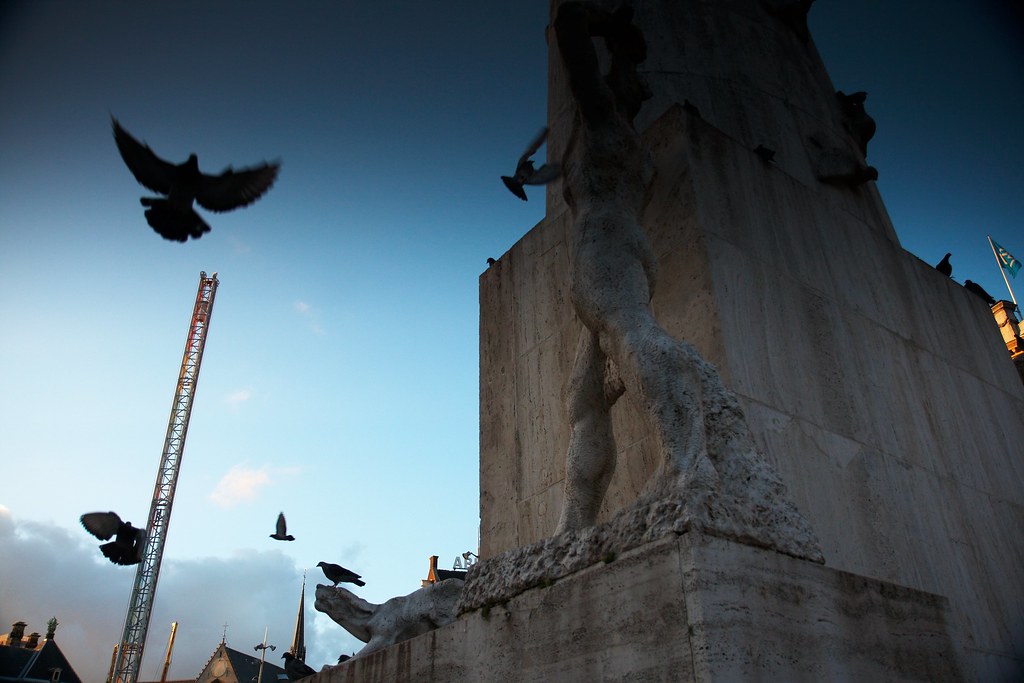
Obviously, it didn't come so easily, and getting to know random strangers doesn't come naturally either way. I guess I'll just have to make much more of an effort in the future. The first weekend I was in Amsterdam happened to be the gay pride parade. I did manage to take a lot of pictures of mostly drunk partygoers. There's other random pictures of Amsterdam here as well.
The one below's probably one of my favourite shots, from my first few days at the hostel. It's not really a picture of Amsterdam though, it could be a picture of any city. People each with their own destinations and priorities, passing by within a few feet of others with entirely different lives.
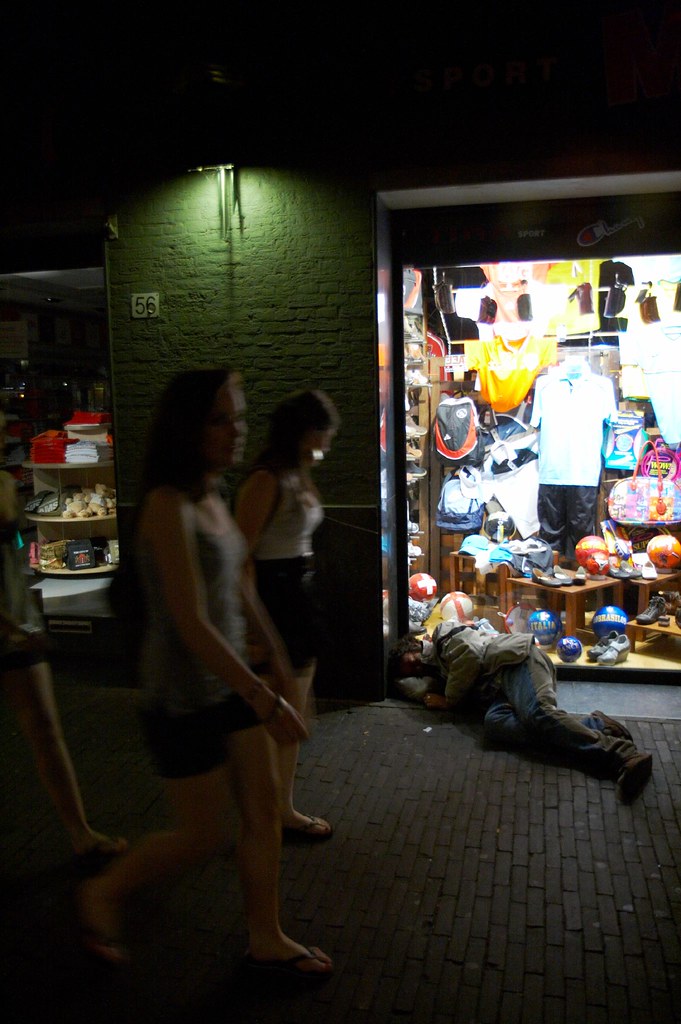
To say the least I'm not particularly happy or proud of any of the pictures; I don't think I really "accomplished" much in terms of photography in the past few months. My initial lofty goals of intimate portraits of some human condition never came fruition. It never got off the ground. I really just ended up with a collection of tourist photos, distant and detached. I already knew engaging people isn't my forte. I guess I had somehow imagined I'd just get better at it by taking more pictures in an unfamiliar place; perhaps I'd be forced into it by the mere fact that I just didn't know anyone in Amsterdam.




Obviously, it didn't come so easily, and getting to know random strangers doesn't come naturally either way. I guess I'll just have to make much more of an effort in the future. The first weekend I was in Amsterdam happened to be the gay pride parade. I did manage to take a lot of pictures of mostly drunk partygoers. There's other random pictures of Amsterdam here as well.
The one below's probably one of my favourite shots, from my first few days at the hostel. It's not really a picture of Amsterdam though, it could be a picture of any city. People each with their own destinations and priorities, passing by within a few feet of others with entirely different lives.

Nov 16, 2008
Brutal Bond.
I don’t know what it is with all these poor reviews of Quantum of Solace.
For the most part it was brilliantly executed and impeccably choreographed. Craig is the most f!@#$%^ badass Bond ever. I think he’d be the first Bond who’d have me scared s!@#less as an adversary. Any complaints might be that he’s less suave (and perhaps less sexy, but I wouldn't know) than the Bonds of old. This Bond is certainly no Dalton, Moore or Pierce pretty pansy boy.
For all the action, you also see in Bond a broken killing machine acting on impulse, a driven psychopath in denial of his murderous inner rage. Yet in between there's moments of compassion before he buries beneath his facade of control. Maybe this was executed a little to deftly, too subtly, but I think for once you see there’s some emotions (albeit dark ones) in Bond, instead of a caricature of a superspy. I suspect however, many Bond fans adore the warm and fuzzy happy Bond.
Overall I liked the way that most Bond elements were much more subtle than the films of old. There's no Q introducing over-the-top gadgets, but who wouldn't give their firstborn grandchild to get at M's multitouch international intelligence database, or Bond's phone with GPS suspect tracking and 3D camera? He doesn't order a martini, but his bartender up in first class certain knows he likes it shaken and not stirred (although that martini ended up being awfully clear for a shaken drink).
Even the plot that everyone complains about as being sparse mostly makes sense. The criminal organization here is no SPECTRE. There's no gaudy plot with Dr. Evil demanding a ransom of $1 million and the world blowing up. Instead they're less flashy, similar to any other profitteering corporation plundering resources from third world countries, insidiously invisible and efficient.
Overall this Bond film is about as realistic as Bond films get after all the flashy elements and cheezy oneliners have been toned down. Despite all that, Bond wreaks some mighty havoc.
Also worth mentioning, the trademark implied-naked-bond-girls opening sequence was one of the less cheesy ones, and the Jack White/Alicia Keys theme is pretty sweet too, up there with "A View to a Kill" and "Live and Let Die".
For the most part it was brilliantly executed and impeccably choreographed. Craig is the most f!@#$%^ badass Bond ever. I think he’d be the first Bond who’d have me scared s!@#less as an adversary. Any complaints might be that he’s less suave (and perhaps less sexy, but I wouldn't know) than the Bonds of old. This Bond is certainly no Dalton, Moore or Pierce pretty pansy boy.
For all the action, you also see in Bond a broken killing machine acting on impulse, a driven psychopath in denial of his murderous inner rage. Yet in between there's moments of compassion before he buries beneath his facade of control. Maybe this was executed a little to deftly, too subtly, but I think for once you see there’s some emotions (albeit dark ones) in Bond, instead of a caricature of a superspy. I suspect however, many Bond fans adore the warm and fuzzy happy Bond.
Overall I liked the way that most Bond elements were much more subtle than the films of old. There's no Q introducing over-the-top gadgets, but who wouldn't give their firstborn grandchild to get at M's multitouch international intelligence database, or Bond's phone with GPS suspect tracking and 3D camera? He doesn't order a martini, but his bartender up in first class certain knows he likes it shaken and not stirred (although that martini ended up being awfully clear for a shaken drink).
Even the plot that everyone complains about as being sparse mostly makes sense. The criminal organization here is no SPECTRE. There's no gaudy plot with Dr. Evil demanding a ransom of $1 million and the world blowing up. Instead they're less flashy, similar to any other profitteering corporation plundering resources from third world countries, insidiously invisible and efficient.
Overall this Bond film is about as realistic as Bond films get after all the flashy elements and cheezy oneliners have been toned down. Despite all that, Bond wreaks some mighty havoc.
Also worth mentioning, the trademark implied-naked-bond-girls opening sequence was one of the less cheesy ones, and the Jack White/Alicia Keys theme is pretty sweet too, up there with "A View to a Kill" and "Live and Let Die".
Nov 15, 2008
Regression.
Back in California. Back at work. Back living with the roommates that I lived with during school in '97. Back to playing video games till 5am, except now only on weekends. Incidentally, the game happens to be Fallout 3. The original Fallout also came out in '97.
So it seems like a regression of sorts. At work a "regression" refers to a bug where a new change breaks something that used to work fine. In that sense, progress almost inevitably leads to regression. Joints that crack a little more. Skin that's a little drier. Injuries that take a little longer to heal. Wrinkles that dig in a little deeper.
Wait, what am I talking about? I'm asian and well protected from solar radiation. Speaking of solar radiation, it's 24C and blazingly sunny. And the battery on my bike is dead. Bummer of a regression.
So it seems like a regression of sorts. At work a "regression" refers to a bug where a new change breaks something that used to work fine. In that sense, progress almost inevitably leads to regression. Joints that crack a little more. Skin that's a little drier. Injuries that take a little longer to heal. Wrinkles that dig in a little deeper.
Wait, what am I talking about? I'm asian and well protected from solar radiation. Speaking of solar radiation, it's 24C and blazingly sunny. And the battery on my bike is dead. Bummer of a regression.
Nov 7, 2008
Feet planted loosely.
Before leaving Amsterdam I had whipped together one last cake. It was a failure in terms of using up my remaining eggs, butter, sugar and pancake mix - I still had a fair bit of the last two ingredients remaining. As a dense yet moist chocolate cake though, it worked pretty well. Especially surprising since I normally don't bake, and the saying the baking requires precision doesn't mesh well with my throw everything in the pan style. Oh, and it also helped me finish off one box of ice cream.
I was trying to use up the box of dutch pancake mix I had. Dutch pancakes are similar to crepes, so I figure there isn't much rising agent in it, so I suspect it's something like flour/milk powder/egg powder (if that exists), but I suspect this same recipe would work with just flour. It would probably lead to a pretty dense cake, hence the whipped egg whites in the recipe.
2 eggs
2 bars of 70% dark chocolate
8 heaping teaspons of sugar
4 heaping teaspoons of Koopmans pancake mix
1/4 stick of butter
1. Melt butter and chocolate together in a bowl in the microwave. Nuke for short periods of time (20-30 seconds), if it's soft, stir until melted, if not, give it another 20 seconds. Do not burn the chocolate. Let cool so it doesn't cook the eggs when you mix it.
2. Separate the eggs. Whip egg whites until soft peaks form. You should have a full bowl of egg foam, with very little liquid.
3. Beat egg yolks and mix in the sugar.
4. Mix melted chocolate with egg yolk mix.
5. Mix pancake mix into chocolate mix.
6. Fold egg whites into chocolate mix.
7. Pour into ramekins, bake for about 14 minutes at 250F (or until the batter inside does not stick to a stick that's poked into the center).
It amazes me that I've already been back home for a week.
Three months seemed to be just long enough to start getting to know people and finding a place to fit in. I think at two months, I would have been glad to head home, with little more than a bit of experience at a photo agency backoffice, having checked out visa pour l'image, and a few random interesting but ultimately forgettable one-off encounters. In the last month I found that I was actually getting to know people well enought that leaving meant missing newfound friends.
It's been good to be back, I was pleasantly surprised by the warm welcome here. Not having seen friends for three months is enough time for a good few changes. Some couples are now married couples, other married couples are now parents or expecting parents. Sunnyvale Town Center, where we used to go for cheap sushi-maru and dimsum, is now demolished, soon to be built into something else. I got back just in time to watch the first half-black president get elected in the US, after being able to get the European perspective on the importance of the American election.
Overall the past three months weren't as encouraging as I had hoped. I didn't really "figure out" the future, I've gotten home with more questions and fewer answers. There were a few lessons to be learned here and there, and some things did make an impression. I'm much more motivated to learn new languages, I'm reminded of the need to take more initiatives, I've even reaffirmed that my initial impressions of people tend to be pretty accurate. It'll probably be another year before I make up my mind on something significantly new, but since I'm back I think I'll put some of those lessons to use and invest my time here better than I have in the past.
Oh, and how come I've never known of the awesomeness of the Pixies? I mean that song from "Fight Club" was great, although I never knew who it was by. That plus it sounded thoroughly cool when the movie came out in '99, even though "Where Is My Mind" was out in '88!
I was trying to use up the box of dutch pancake mix I had. Dutch pancakes are similar to crepes, so I figure there isn't much rising agent in it, so I suspect it's something like flour/milk powder/egg powder (if that exists), but I suspect this same recipe would work with just flour. It would probably lead to a pretty dense cake, hence the whipped egg whites in the recipe.
2 eggs
2 bars of 70% dark chocolate
8 heaping teaspons of sugar
4 heaping teaspoons of Koopmans pancake mix
1/4 stick of butter
1. Melt butter and chocolate together in a bowl in the microwave. Nuke for short periods of time (20-30 seconds), if it's soft, stir until melted, if not, give it another 20 seconds. Do not burn the chocolate. Let cool so it doesn't cook the eggs when you mix it.
2. Separate the eggs. Whip egg whites until soft peaks form. You should have a full bowl of egg foam, with very little liquid.
3. Beat egg yolks and mix in the sugar.
4. Mix melted chocolate with egg yolk mix.
5. Mix pancake mix into chocolate mix.
6. Fold egg whites into chocolate mix.
7. Pour into ramekins, bake for about 14 minutes at 250F (or until the batter inside does not stick to a stick that's poked into the center).
It amazes me that I've already been back home for a week.
Three months seemed to be just long enough to start getting to know people and finding a place to fit in. I think at two months, I would have been glad to head home, with little more than a bit of experience at a photo agency backoffice, having checked out visa pour l'image, and a few random interesting but ultimately forgettable one-off encounters. In the last month I found that I was actually getting to know people well enought that leaving meant missing newfound friends.
It's been good to be back, I was pleasantly surprised by the warm welcome here. Not having seen friends for three months is enough time for a good few changes. Some couples are now married couples, other married couples are now parents or expecting parents. Sunnyvale Town Center, where we used to go for cheap sushi-maru and dimsum, is now demolished, soon to be built into something else. I got back just in time to watch the first half-black president get elected in the US, after being able to get the European perspective on the importance of the American election.
Overall the past three months weren't as encouraging as I had hoped. I didn't really "figure out" the future, I've gotten home with more questions and fewer answers. There were a few lessons to be learned here and there, and some things did make an impression. I'm much more motivated to learn new languages, I'm reminded of the need to take more initiatives, I've even reaffirmed that my initial impressions of people tend to be pretty accurate. It'll probably be another year before I make up my mind on something significantly new, but since I'm back I think I'll put some of those lessons to use and invest my time here better than I have in the past.
Oh, and how come I've never known of the awesomeness of the Pixies? I mean that song from "Fight Club" was great, although I never knew who it was by. That plus it sounded thoroughly cool when the movie came out in '99, even though "Where Is My Mind" was out in '88!
Oct 29, 2008
Braindead.
I have to say, eastern Europe has a certain endearing charm; I find Zagreb's just calling me to return. It's got it's own sense of burgeoning coolness, a trendy looking take-out sushi bar with external signage looks like it'd be right at home in an upscale San Francisco district, but with some pretty unique anime-inspired art inside, and hot brunette Croatian servers.
On the other hand, maybe I was a little too comfortable, as I left me camera in my friend's car when getting off at the airport. I guess that means I can't be a photographer! Ugh.
On the other hand, maybe I was a little too comfortable, as I left me camera in my friend's car when getting off at the airport. I guess that means I can't be a photographer! Ugh.
Oct 23, 2008
Leftovers
I was really more excited with the various leftovers I managed to clean out of my fridge with this, rather than how good it really was. But then, it really was pretty good. A personal sized chai flavoured bread pudding.
Sitting around:
1. 1 rock hard 3 day old bread roll
2. 2 eggs
3. half a liter of milk
Solution:
1. Make some chai:
1a. Boil milk with a couple of teaspoons of Assam tea, 2 cloves, half a stick of cinammon, and a cardammom pod.
1b. When at a boil, add lots of sugar, until it's super sweet.
1c. Strain and let cool.
2. Cut up the bread. This was the most difficult part when the bread was rock hard. A hammer might have worked better, place bread in a non-stick (or buttered) pan so it fits snuggly. You want to be able to pour in liquid and have it fill in the cracks, if your pan is too big, this won't happen.
3. Beat the egg till frothy.
4. After the chai has cooled a bit (so it doesn't cook the egg on contact) add chai to the egg. Add enough so that you have enough liquid to fill what space is left in the pan.
5. Let bread soak up the liquid. This could take 10 minutes.
6. Bake for until the custard sets. It took me 20 minutes at 300C (my combo nuke-convection-broiler oven doesn't go any higher) with my thin dessert. I think it could take up to 45 minutes if you have a larger and thicker bread pudding. Serve warm a la mode.
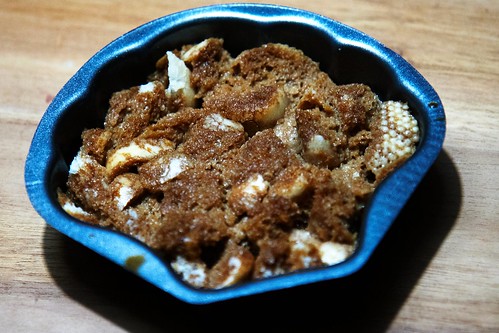
I could only find a big bread pan that was too big, or two small shell shaped pans, which worked well. I ended up having enough stuff to make 2. The second sat another 2 days in the fridge before I baked it, no worse for the wear. I really should have taken a picture, on a plate, with ice cream, but I got impatient and ate it.
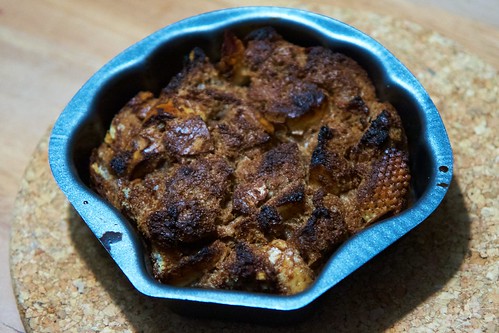
Sitting around:
1. 1 rock hard 3 day old bread roll
2. 2 eggs
3. half a liter of milk
Solution:
1. Make some chai:
1a. Boil milk with a couple of teaspoons of Assam tea, 2 cloves, half a stick of cinammon, and a cardammom pod.
1b. When at a boil, add lots of sugar, until it's super sweet.
1c. Strain and let cool.
2. Cut up the bread. This was the most difficult part when the bread was rock hard. A hammer might have worked better, place bread in a non-stick (or buttered) pan so it fits snuggly. You want to be able to pour in liquid and have it fill in the cracks, if your pan is too big, this won't happen.
3. Beat the egg till frothy.
4. After the chai has cooled a bit (so it doesn't cook the egg on contact) add chai to the egg. Add enough so that you have enough liquid to fill what space is left in the pan.
5. Let bread soak up the liquid. This could take 10 minutes.
6. Bake for until the custard sets. It took me 20 minutes at 300C (my combo nuke-convection-broiler oven doesn't go any higher) with my thin dessert. I think it could take up to 45 minutes if you have a larger and thicker bread pudding. Serve warm a la mode.

I could only find a big bread pan that was too big, or two small shell shaped pans, which worked well. I ended up having enough stuff to make 2. The second sat another 2 days in the fridge before I baked it, no worse for the wear. I really should have taken a picture, on a plate, with ice cream, but I got impatient and ate it.

Oct 1, 2008
Something new
I was at a concert in Amsterdam's Concertgebouw today. The first half was Beethoven's 6th, the second half Bartok. I find baroque and classical music easy to listen to, and Beethoven's 6th is both familiar and pleasant. It's the first time I've ever listened to Bartok - up till now I've pretty much dismissed any "modern" composer as unlistenable.
The first thing that struck me is that it sounded a lot like movie soundtrack music. I guess Bartok must have had a significant impact on current movie soundtrack composers. While listening and thinking about it, pieces began falling in place. Compared to the Beethoven, the Bartok piece seemed extremely disjointed, mostly missing any sort of melody, and instead featuring dissonant chords.
Although all the chords don't form a musical piece that draws me a long, they're very moody. The modern classical sets the mood instead of providing a tune to hum along to - which it makes sens that it's influenced a lot of today's movie music. However, I still think it doesn't stand well on it's own - without the clear melody, it's hard to follow. I do keep trying to picture the movie scenes that would go with the music though.
Apparently I had an awesome seat, I was told that I was sitting right in front of the mayor of Amsterdam!
The first thing that struck me is that it sounded a lot like movie soundtrack music. I guess Bartok must have had a significant impact on current movie soundtrack composers. While listening and thinking about it, pieces began falling in place. Compared to the Beethoven, the Bartok piece seemed extremely disjointed, mostly missing any sort of melody, and instead featuring dissonant chords.
Although all the chords don't form a musical piece that draws me a long, they're very moody. The modern classical sets the mood instead of providing a tune to hum along to - which it makes sens that it's influenced a lot of today's movie music. However, I still think it doesn't stand well on it's own - without the clear melody, it's hard to follow. I do keep trying to picture the movie scenes that would go with the music though.
Apparently I had an awesome seat, I was told that I was sitting right in front of the mayor of Amsterdam!
Sep 29, 2008
Amsterdam
Why is it so hard to go to bed early, even when I'm exhausted from a lack of sleep? Anyways, so I figured out how to get around my wifi problem. Had to go in and change the channel that I was on. I always wondered what the practical use of the various channels were, I guess I figured it out now.
So amongst the DVD collection here is the Coldplay Live 2003 disc. Since I had enjoyed the concert at Shoreline, I stuck the disc in and it's been playing on repeat for the last couple of days (except for a 12-hour stretch where I plowed through Band of Brothers). 2003 seems like a lifetime ago.
I'd never noticed this song "Amsterdam" before. Well, I've heard it while listening to the CD, but I've never even noticed the song title, and barely the lyrics either. Oddly, they both seem rather fitting at the moment though.
Come on, my star is fading
And I swerve out of control
If i, if I’d only waited
I’d not be stuck here in this hole
Come here my star is fading
And I swerve out of control
And I swear I waited and waited
I’ve got to get out of this hole
But time is on your side
Its on your side now
Not pushing you down and all around
It’s no cause for concern
Come on, oh my star is fading
And I see no chance of release
And I know I’m dead on the surface
But I am screaming underneath
And time is on your side
Its on your side now
Not pushing you down
And all around, no
It’s no cause for concern
Stuck on the end of this ball and chain
And I’m on my way back down again
Stood on a bridge, tied to the noose
Sick to the stomach
You can say what you mean
But it won’t change a thing
I’m sick of the secrets
Stood on the edge, tied to a noose
You came along and you cut me loose
You came along and you cut me loose
You came along and you cut me loose.
So amongst the DVD collection here is the Coldplay Live 2003 disc. Since I had enjoyed the concert at Shoreline, I stuck the disc in and it's been playing on repeat for the last couple of days (except for a 12-hour stretch where I plowed through Band of Brothers). 2003 seems like a lifetime ago.
I'd never noticed this song "Amsterdam" before. Well, I've heard it while listening to the CD, but I've never even noticed the song title, and barely the lyrics either. Oddly, they both seem rather fitting at the moment though.
Come on, my star is fading
And I swerve out of control
If i, if I’d only waited
I’d not be stuck here in this hole
Come here my star is fading
And I swerve out of control
And I swear I waited and waited
I’ve got to get out of this hole
But time is on your side
Its on your side now
Not pushing you down and all around
It’s no cause for concern
Come on, oh my star is fading
And I see no chance of release
And I know I’m dead on the surface
But I am screaming underneath
And time is on your side
Its on your side now
Not pushing you down
And all around, no
It’s no cause for concern
Stuck on the end of this ball and chain
And I’m on my way back down again
Stood on a bridge, tied to the noose
Sick to the stomach
You can say what you mean
But it won’t change a thing
I’m sick of the secrets
Stood on the edge, tied to a noose
You came along and you cut me loose
You came along and you cut me loose
You came along and you cut me loose.
Sep 28, 2008
Caos Calmo - pointless review
I must be some kinda genius to think that I could understand an italian movie subtitled in dutch - or, at least, I must think I'm some kinda genius, since I neither speak italian nor do I read dutch, nor is my french anywhere close to good enough to understand the few scenes where business deals go on in that language. I think my favourite scene was when Roman Polanski, playing a high level executive, asks to continue a meeting in English (although pretty much right after, the dialog in the scene fades out to music).
It's a movie about a widower and his elementary school level daughter dealing with grief after his wife/her mothe dies suddenly in their garden. He promises to wait outside her school, and passes up on his job responsibilities to sit in the park. As the days pass, he builds up meaningless yet heartwarming "relationships" of the people who pass through the park daily, as well as his colleagues and friends who drop in on his park bench.
I'm sure I missed out a lot from not fully understanding almost all of the conversations, although from the very few bits I know of either language, the film was straightforward enough so that I wasn't entirely lost either. I pretty much missed out on much of the symbolism in the film. I didn't get the significance of most of the park characters (if there was any), nor of the gratuitious sex scene which probably ought to give this film an OLD rating for folks 45 and up. On the plus side, I'm now familiar with Stars' Your Ex-Lover is Dead and Rufus Wainwright's Cigarettes and Chocolate Milk.
It's a movie about a widower and his elementary school level daughter dealing with grief after his wife/her mothe dies suddenly in their garden. He promises to wait outside her school, and passes up on his job responsibilities to sit in the park. As the days pass, he builds up meaningless yet heartwarming "relationships" of the people who pass through the park daily, as well as his colleagues and friends who drop in on his park bench.
I'm sure I missed out a lot from not fully understanding almost all of the conversations, although from the very few bits I know of either language, the film was straightforward enough so that I wasn't entirely lost either. I pretty much missed out on much of the symbolism in the film. I didn't get the significance of most of the park characters (if there was any), nor of the gratuitious sex scene which probably ought to give this film an OLD rating for folks 45 and up. On the plus side, I'm now familiar with Stars' Your Ex-Lover is Dead and Rufus Wainwright's Cigarettes and Chocolate Milk.
Sep 26, 2008
the little things that keep me down
So there was a matter of this little item, a tiny item, that was Fedexed to me. The problem is, it was sent to my home address in Amsterdam, and I don't happen to be home during the day since I go to work. Unfortunately, the Fedex box was too big to fit in my mail slot, so hence although it took less than a week to cross from California to Europe, it spent two weeks lingering in the Fedex truck, making one failed attempt at delivery after another.
So finally after two weeks, I have a weekday off (weekends were useless since the Fedex office was closed). They've long since given up on delivering the fricking package, so I took the bus to the depot, which happened to be in a warehouse by the airport. It took three different buses in each direction, and the roundtrip took two hours. When I got the package, I opened it on the spot. Inside the box was a bunch of bubble wrap and a letter sized envelope. Inside the envelope was my little key fob. I stuck the key fob in my pocket and left the box and the bubble wrap in the trash and headed back to the bus stop.
Ugh.
If I had been smarter, I'd would have had it sent to my office, like I usually do back at home. It blows my mind though, how such a little thing can turn into such a huge hassle.
So finally after two weeks, I have a weekday off (weekends were useless since the Fedex office was closed). They've long since given up on delivering the fricking package, so I took the bus to the depot, which happened to be in a warehouse by the airport. It took three different buses in each direction, and the roundtrip took two hours. When I got the package, I opened it on the spot. Inside the box was a bunch of bubble wrap and a letter sized envelope. Inside the envelope was my little key fob. I stuck the key fob in my pocket and left the box and the bubble wrap in the trash and headed back to the bus stop.
Ugh.
If I had been smarter, I'd would have had it sent to my office, like I usually do back at home. It blows my mind though, how such a little thing can turn into such a huge hassle.
Sep 25, 2008
Miracle Food
It's surprising it's not more popular (maybe it is, and I'm just unaware of it), and I feel pretty foolish for not having taken advantage of it much earlier, but over the past few months, I've realized that cous cous is probably one of the best instant foods out there.
It's not like it's the first time I've had it. I recall visiting a Moroccan restaurant in Boulder, Colorado when I was still in elementary, and thinking cous cous was one of the best things ever. I had the idea that it was exotic and difficult to prepare though, having heard that it was hand rolled from semolina and required a long steaming time.
I didn't really realize until maybe a couple of years ago that the common supermarket version is already pre-cooked and dried, meaning that preparation simply amounts to soaking in boiling water (off of the heat, but covered) for about 5 minutes or so. It's not quite as fluffy as the real thing, but for something that can be prepared in about half the time of cooking pasta, I'd be willing to forgo that Slow Food mentality. And unlike most other instant foods, it's not packed with preservatives, salt or fat. It's pretty much just dried starch.
So although cous cous has that wonderful grainy yet soft-like-rice texture, it's not the most flavourful item out there when prepared with boiling hot water, but since it absorbs liquid so well, using some sort of flavoured liquid gives you a dish that hardly needs a side. As usual, I just throw together whatever's available in the kitchen, but with cous cous, it only takes 5 minutes to make another batch if you fail!
Braised Lamb Shanks with Instant Cous Cous
1. Marinate a lamb shank for as long as you can. I made up a marinade with some soy sauce, oregano, black pepper, bordeaux, chinese cooking wine and paprika. That's what I call fusion. Pretty good too. Use a lot of marinade, you'll end up cooking the meat in the liquid.
2. Chop up an onion and a red pepper (intead of using a red bell pepper, I got this long version, but it's the same idea).
3. Heat up a mid sized pot on the stove at high heat. When hot, add some olive oil and spread it out over the bottom of the pot, and sautee the onion for a minute or two before tossing in the red pepper. Continue to sautee until the onion is slightly translucent, and pour out the onion and pepper into a side bowl.
4. Return the pot to the heat, and before the remaining juices burn, put the lamb shank (without the marinade) into the empty pot. Sear for a minute or so, and then flip it and sear the opposite side for another minute.
5. Turn the heat down low and pour the onions and peppers back into the pot. Also pour the marinade into the pot.
6. Chop a tomato or two and add to the pot. I mostly toss this in for the extra liquid. If it looks like you need more liquid, add more tomatoes. Toss in some fresh basil too, for the taste. Also add plenty of salt. Generally you'd want the liquid to be very salty for the flavour to sink into the meat. Continue to cook at very low heat - a bare simmer, for two hours or so. Check on the fluid level, if it gets low, add some water or water/wine, or some other tasty liquid.
Sure, this takes two hours, but I've found that braised meats keep pretty well, so this is something you can do, say on a lazy Sunday afternoon for a Monday and Tuesday meal. When you're ready to eat, just stick the pot back on the stove, and maybe add a bit of fluid to reheat.
7. When ready to eat, take the lamb shank out. You'll be left with a very flavourful stew of onions, pepper, and tomatoes. Add enough water so that there's about 1.25 times as much stew as cous cous, and bring to a boil. Pour in the amount of cous cous you want for dinner, turn off the heat, and stir until mixed, and cover for about 5 minutes. Uncover and you've got some tasty cous cous to go along with your lamb.
If you don't have time to make a braised dish or stew, you can sauteeing/pan fry a main dish. When done, deglaze the pan with some wine, then add water and bring that combo to a boil, and add some salt to taste. Add the cous cous, stir, and cover for 5 minutes, and voila, there's your starch side.
It's not like it's the first time I've had it. I recall visiting a Moroccan restaurant in Boulder, Colorado when I was still in elementary, and thinking cous cous was one of the best things ever. I had the idea that it was exotic and difficult to prepare though, having heard that it was hand rolled from semolina and required a long steaming time.
I didn't really realize until maybe a couple of years ago that the common supermarket version is already pre-cooked and dried, meaning that preparation simply amounts to soaking in boiling water (off of the heat, but covered) for about 5 minutes or so. It's not quite as fluffy as the real thing, but for something that can be prepared in about half the time of cooking pasta, I'd be willing to forgo that Slow Food mentality. And unlike most other instant foods, it's not packed with preservatives, salt or fat. It's pretty much just dried starch.
So although cous cous has that wonderful grainy yet soft-like-rice texture, it's not the most flavourful item out there when prepared with boiling hot water, but since it absorbs liquid so well, using some sort of flavoured liquid gives you a dish that hardly needs a side. As usual, I just throw together whatever's available in the kitchen, but with cous cous, it only takes 5 minutes to make another batch if you fail!
Braised Lamb Shanks with Instant Cous Cous
1. Marinate a lamb shank for as long as you can. I made up a marinade with some soy sauce, oregano, black pepper, bordeaux, chinese cooking wine and paprika. That's what I call fusion. Pretty good too. Use a lot of marinade, you'll end up cooking the meat in the liquid.
2. Chop up an onion and a red pepper (intead of using a red bell pepper, I got this long version, but it's the same idea).
3. Heat up a mid sized pot on the stove at high heat. When hot, add some olive oil and spread it out over the bottom of the pot, and sautee the onion for a minute or two before tossing in the red pepper. Continue to sautee until the onion is slightly translucent, and pour out the onion and pepper into a side bowl.
4. Return the pot to the heat, and before the remaining juices burn, put the lamb shank (without the marinade) into the empty pot. Sear for a minute or so, and then flip it and sear the opposite side for another minute.
5. Turn the heat down low and pour the onions and peppers back into the pot. Also pour the marinade into the pot.
6. Chop a tomato or two and add to the pot. I mostly toss this in for the extra liquid. If it looks like you need more liquid, add more tomatoes. Toss in some fresh basil too, for the taste. Also add plenty of salt. Generally you'd want the liquid to be very salty for the flavour to sink into the meat. Continue to cook at very low heat - a bare simmer, for two hours or so. Check on the fluid level, if it gets low, add some water or water/wine, or some other tasty liquid.
Sure, this takes two hours, but I've found that braised meats keep pretty well, so this is something you can do, say on a lazy Sunday afternoon for a Monday and Tuesday meal. When you're ready to eat, just stick the pot back on the stove, and maybe add a bit of fluid to reheat.
7. When ready to eat, take the lamb shank out. You'll be left with a very flavourful stew of onions, pepper, and tomatoes. Add enough water so that there's about 1.25 times as much stew as cous cous, and bring to a boil. Pour in the amount of cous cous you want for dinner, turn off the heat, and stir until mixed, and cover for about 5 minutes. Uncover and you've got some tasty cous cous to go along with your lamb.
If you don't have time to make a braised dish or stew, you can sauteeing/pan fry a main dish. When done, deglaze the pan with some wine, then add water and bring that combo to a boil, and add some salt to taste. Add the cous cous, stir, and cover for 5 minutes, and voila, there's your starch side.
Sep 24, 2008
More Food Thoughts
It seems like all I think about these days are food. That and how my internet access has been all screwed up today. I can now access the internet fine with my laptop plugged into the wireless router via ethernet, but it just keeps disconnecting via wifi. Either the wifi on the router is dying (I have problems on both laptops), or I'm being innundated by some sort of high energy radio frequency radiation that's enough to disrupt my wifi and most likely kill me.
Back to the food. I can't comprehend how President brand brie can be so popular. In the US, it was the worst brie I've ever had - to the point where I'd avoid buying brie altogether if President was the only one available. The stuff is flavourless, not creamy, and rather stiff (for brie). It bears only slight resemblance to good brie. So I was rather surprised to see the brand being popular in the supermarkets, both in France and Amsterdam.
Maybe the European version is significantly better? Maybe the brand was well established in Europe, and it's merely the North American licensee that produces an inferior product? You'd think the Dutch, who pride themselves on their cheese consumption, would have somewhat of a taste for cheese right? Or you'd think the French would be able to pick out a good French cheese? So I tried buying some, and comparing it to another brie at a local cheese shop. Verdict: President brie is still shit. I need to ditch all my preconcieved notions that Europeans have a more refined cuisine than North Americans. They certainly don't (try ordering a pizza in France and see what travesty you end up with), but they may still be more snobbish about it.
Second food related thought for the night, more alcohol does not make a better beer. I've been taken up with Belgian beers, especially abbey ales, after visiting the beer fridge at Bo's BBQ in Lafayett, CA. I guess one good thing about the Netherlands is that it's close to Belgium, meaning that access to Belgian beer is much easier than it is in California, although Dutch beers (which are still better than American beers) are still more popular. La Trappe is a Dutch Trappist brewery, with beers available at local supermarkets. I've tried their Dubbel (which usually refers to a brown ale) and Tripel (which usually refers to a stronger brown ale). I found that La Trappe also has a Quadrupel, which one assumes, is an even stronger ale (it is, at 10%). I bought a sixpack, which was a mistake, considering the taste of the stuff is pretty harsh. If there ever was a sipping beer, this is it, I couldn't imagine anyone would really enjoy just gulping this dark fluid down.
Back to the food. I can't comprehend how President brand brie can be so popular. In the US, it was the worst brie I've ever had - to the point where I'd avoid buying brie altogether if President was the only one available. The stuff is flavourless, not creamy, and rather stiff (for brie). It bears only slight resemblance to good brie. So I was rather surprised to see the brand being popular in the supermarkets, both in France and Amsterdam.
Maybe the European version is significantly better? Maybe the brand was well established in Europe, and it's merely the North American licensee that produces an inferior product? You'd think the Dutch, who pride themselves on their cheese consumption, would have somewhat of a taste for cheese right? Or you'd think the French would be able to pick out a good French cheese? So I tried buying some, and comparing it to another brie at a local cheese shop. Verdict: President brie is still shit. I need to ditch all my preconcieved notions that Europeans have a more refined cuisine than North Americans. They certainly don't (try ordering a pizza in France and see what travesty you end up with), but they may still be more snobbish about it.
Second food related thought for the night, more alcohol does not make a better beer. I've been taken up with Belgian beers, especially abbey ales, after visiting the beer fridge at Bo's BBQ in Lafayett, CA. I guess one good thing about the Netherlands is that it's close to Belgium, meaning that access to Belgian beer is much easier than it is in California, although Dutch beers (which are still better than American beers) are still more popular. La Trappe is a Dutch Trappist brewery, with beers available at local supermarkets. I've tried their Dubbel (which usually refers to a brown ale) and Tripel (which usually refers to a stronger brown ale). I found that La Trappe also has a Quadrupel, which one assumes, is an even stronger ale (it is, at 10%). I bought a sixpack, which was a mistake, considering the taste of the stuff is pretty harsh. If there ever was a sipping beer, this is it, I couldn't imagine anyone would really enjoy just gulping this dark fluid down.
Sep 22, 2008
Dutch Efficiencies
That would be an oxymoron, if I've ever coined one. I'm impressed how locals can bear with some of the bureacracies here, let alone get anything done. Even more impressively, I'm often told with the shake of the head to bear with it and be patient, as if it's the only possibility, and that it's a virtue to wait and abide on idiocy. Patience certainly has its place, but in Amsterdam, it's absurd. Take my attempts at opening a bank account for example:
1. Go to a bank to open an account, with all your required paperwork. The standard response (I've tried a couple of different banks) is that I need to make an appointment. Seriously, come on now, it's 9am and there's 2 people working in the bank and 0 customers, and I need to make an appointment to come back another day? Where's the logic in that? Do you not want accounts to be opened? Two banks actually asked me to make the appointment by phone because they were unable to make an appointment for some reason (although a 3rd branch did it on the spot for me).
2. Actually open an account. Even though I have the proper paperwork, it takes them an hour to verify that what I have is sufficient, and that's before they begin the process of opening the account. Opening the account takes another half hour, mostly because the bank person (I have no idea what to call him, he seems to amount to a teller, but they don't actually have the teller stalls they have in the rest of the world... they just sit around at their desks doing God knows what) hunts and pecks at the keyboard. Seriously, you have 3 other fingers and opposable thumbs, learn to use them.
3. Wait for the bank card. I don't understand why they can't provide me with the card at the bank when I open the account, especially since I made an appointment in advance. Can't they send the card to the bank when I make the appointment? Can't they at least give me a temporary card, as I've gotten pretty much at every bank in North America?
4. Activate the bank card. Ok, I've waited a little less than a week to actually receive my bank card, but I'm told I need to bring it to a branch to activate it. This sounds like a minor annoyance, but I've failed at least 3 times now. Attempt #1, I'm told I need my passport. Ok, it makes a bit of sense since I used my passport as ID to open the account, but please, I had other photo ID, and the "teller" who opened my account could have mentioned this requirement to save me a trip. Attempt #2, the next day, the branch is closed, with a sign telling me to go to another branch. Heck I was there yesterday, and you could have told me that you would be closed instead of telling me to "come back tomorrow with my passport". #3 Ok, I had to wait past the weekend, so on Monday I give it another shot in the morning and I realize that banks open on Mondays from 1-5pm. Seriously guys, I can understand a case of Mondays, but this is a little out of hand.
I'm no big fan of America, but compared to Dutch banking practices, I wouldn't put my bets on the Euro either. Now if corporate America could throw around some of its weight in a good way and get these European banks to get their acts together.
1. Go to a bank to open an account, with all your required paperwork. The standard response (I've tried a couple of different banks) is that I need to make an appointment. Seriously, come on now, it's 9am and there's 2 people working in the bank and 0 customers, and I need to make an appointment to come back another day? Where's the logic in that? Do you not want accounts to be opened? Two banks actually asked me to make the appointment by phone because they were unable to make an appointment for some reason (although a 3rd branch did it on the spot for me).
2. Actually open an account. Even though I have the proper paperwork, it takes them an hour to verify that what I have is sufficient, and that's before they begin the process of opening the account. Opening the account takes another half hour, mostly because the bank person (I have no idea what to call him, he seems to amount to a teller, but they don't actually have the teller stalls they have in the rest of the world... they just sit around at their desks doing God knows what) hunts and pecks at the keyboard. Seriously, you have 3 other fingers and opposable thumbs, learn to use them.
3. Wait for the bank card. I don't understand why they can't provide me with the card at the bank when I open the account, especially since I made an appointment in advance. Can't they send the card to the bank when I make the appointment? Can't they at least give me a temporary card, as I've gotten pretty much at every bank in North America?
4. Activate the bank card. Ok, I've waited a little less than a week to actually receive my bank card, but I'm told I need to bring it to a branch to activate it. This sounds like a minor annoyance, but I've failed at least 3 times now. Attempt #1, I'm told I need my passport. Ok, it makes a bit of sense since I used my passport as ID to open the account, but please, I had other photo ID, and the "teller" who opened my account could have mentioned this requirement to save me a trip. Attempt #2, the next day, the branch is closed, with a sign telling me to go to another branch. Heck I was there yesterday, and you could have told me that you would be closed instead of telling me to "come back tomorrow with my passport". #3 Ok, I had to wait past the weekend, so on Monday I give it another shot in the morning and I realize that banks open on Mondays from 1-5pm. Seriously guys, I can understand a case of Mondays, but this is a little out of hand.
I'm no big fan of America, but compared to Dutch banking practices, I wouldn't put my bets on the Euro either. Now if corporate America could throw around some of its weight in a good way and get these European banks to get their acts together.
Sep 21, 2008
Food in Amsterdam
Frankly, I haven't eaten out too much since I've arrived in Amsterdam. The last time I tried eating at a sit-down restaurant before my little jaunt in Chinatown (for BBQ pork and duck on flat rice noodles) was during Alex and Sinyee's visit at the beginning of August.
Having a place of my own and a kitchen to myself means I can procrastinate all I want. Most recently I had some nice strawberries that I had bought for smallgroup, but had forgotten to bring out after dinner. A week later, they weren't in the best shape; I thought I'd cut them up and toss them in a pan and make some glazed strawberries to put atop my ice cream (yeah, my average saturday night when I'm down with a cold - I needed the vitamin C). I ended up with more strawberries than ice cream, so the rest ended up in an impromptu strawberry jam, which I was pretty happy with. Ended up in a home-made pop-tart the next morning in conjunction with some mini-pita bread and penotti duo (nutella-like spread).
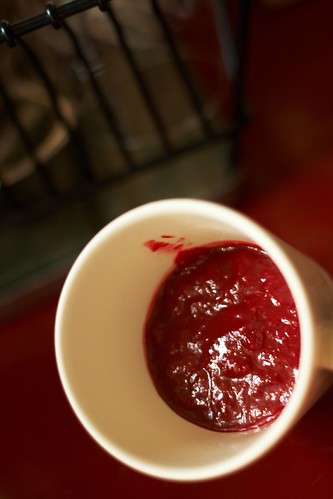
The next item is a mystery inside an enigma, put through a meat grinder and masked in artificial food colouring. The concoction is known "Filet Americain", which begs the questions, where does the concept of "filet" come in, and what's so "Americain" about it (bonus question: where does "Americain" come from, since the Dutch word is "Amerikaan")? Wikipedia claims it's simply the Belgian term for steak tartare, but as you can see from the image below, the produce is actually rather different.
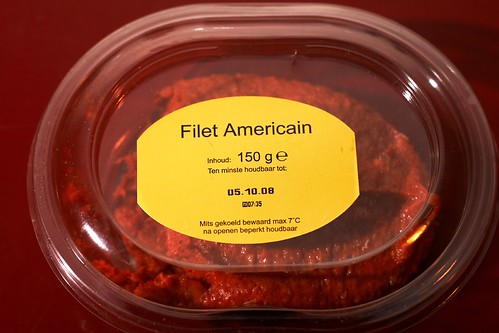
A steak tartare is identifiable as finely chopped raw beef, mixed with spices, olive oil, and perhaps a raw egg. Along with carpaccio, I have the mental image that it's a European dish. I've met one too many Americans who find any sort of raw food too exciting to think that such a dish could originate in the US (although I rather do enjoy raw beef, provided it's served at a reputable enough establishment).
A "filet Americain" though, is sold at supermarkets, with an expiry date at least two weeks out of the purchase date. The meat is ground to the consistency of a paste, and both the texture and flavour are closer to pate than beef. My understanding of economics and food preparation says that meat ground to the point of being unidentifiable is most likely from an inexpensive cut rather than a filet. The fact that it has a two week shelf life suggests that it makes heavy uses of nitrates/nitrite and food colouring to ensure that it remains a tasty orange instead of a drab grey. All in all though, it's a fairly tasty meat-that-you-can-spread-on-toast.
Having a place of my own and a kitchen to myself means I can procrastinate all I want. Most recently I had some nice strawberries that I had bought for smallgroup, but had forgotten to bring out after dinner. A week later, they weren't in the best shape; I thought I'd cut them up and toss them in a pan and make some glazed strawberries to put atop my ice cream (yeah, my average saturday night when I'm down with a cold - I needed the vitamin C). I ended up with more strawberries than ice cream, so the rest ended up in an impromptu strawberry jam, which I was pretty happy with. Ended up in a home-made pop-tart the next morning in conjunction with some mini-pita bread and penotti duo (nutella-like spread).

The next item is a mystery inside an enigma, put through a meat grinder and masked in artificial food colouring. The concoction is known "Filet Americain", which begs the questions, where does the concept of "filet" come in, and what's so "Americain" about it (bonus question: where does "Americain" come from, since the Dutch word is "Amerikaan")? Wikipedia claims it's simply the Belgian term for steak tartare, but as you can see from the image below, the produce is actually rather different.

A steak tartare is identifiable as finely chopped raw beef, mixed with spices, olive oil, and perhaps a raw egg. Along with carpaccio, I have the mental image that it's a European dish. I've met one too many Americans who find any sort of raw food too exciting to think that such a dish could originate in the US (although I rather do enjoy raw beef, provided it's served at a reputable enough establishment).
A "filet Americain" though, is sold at supermarkets, with an expiry date at least two weeks out of the purchase date. The meat is ground to the consistency of a paste, and both the texture and flavour are closer to pate than beef. My understanding of economics and food preparation says that meat ground to the point of being unidentifiable is most likely from an inexpensive cut rather than a filet. The fact that it has a two week shelf life suggests that it makes heavy uses of nitrates/nitrite and food colouring to ensure that it remains a tasty orange instead of a drab grey. All in all though, it's a fairly tasty meat-that-you-can-spread-on-toast.
Sep 20, 2008
Chinatown
Everyone kept telling me that Chinatown in Amsterdam was right beside the Red Light district. Obviously, I haven't spent enough time in the RL, since I haven't found the chinatown till today, when I made a concerted effort to locate it.
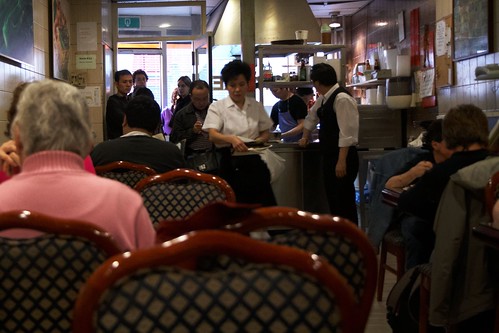
It was surprisingly, pretty much smack dab in the center of the old city, and despite being mixed in with Thai, Indonesian, and Sushi restaurants, had a few passable chinese BBQ restaurants as well as a surprisingly well stocked supermarket, meaning that I now have chinese cooking wine, soy sauce, fried dace and korean aloe drink.
As a constant reminder of my inadequacy with language here in Europe, people in Chinatown seemed to be able to speak Cantonese, Mandarin, Indonesian (?), English and Dutch. At least I learned how to say 'alsjeblieft', I'll call that a moral victory.

It was surprisingly, pretty much smack dab in the center of the old city, and despite being mixed in with Thai, Indonesian, and Sushi restaurants, had a few passable chinese BBQ restaurants as well as a surprisingly well stocked supermarket, meaning that I now have chinese cooking wine, soy sauce, fried dace and korean aloe drink.
As a constant reminder of my inadequacy with language here in Europe, people in Chinatown seemed to be able to speak Cantonese, Mandarin, Indonesian (?), English and Dutch. At least I learned how to say 'alsjeblieft', I'll call that a moral victory.
Sep 17, 2008
Easy come, easy go.
The pedal on my almost-free bike keeps falling off. I think I tried to screw it back on this morning when I parked it, and probably forgot to lock it up after fixing the pedal. Now it's gone.
I hope whoever took it loses the pedal and screws himself over.
I hope whoever took it loses the pedal and screws himself over.
It's here!
Ok, now when can I actually buy it?
Edit: Ah, disappointment, it won't be available till November. The other new cameras announced today, the G10, SX10 IS, 980 IS and 870 IS all look interesting for one reason or another. It's a much more interesting launch this year than last, and my bank account will be hurting for sure.
Edit: Ah, disappointment, it won't be available till November. The other new cameras announced today, the G10, SX10 IS, 980 IS and 870 IS all look interesting for one reason or another. It's a much more interesting launch this year than last, and my bank account will be hurting for sure.
Sep 14, 2008
On Perpignan
I was in Perpignan, France from Sept 2-7 for Visa pour l'Image, supposedly the biggest annual international photojournalism festival. I heard about it last year from photographer Adam Ferguson; at the time I had no expectation to go any time in the near future. Somehow I ended up in Amsterdam, working for a photo agency. Since the staff of the agency were attending the festival, myself, another intern, and an ex-intern were also invited to join, although on our own travel expense.
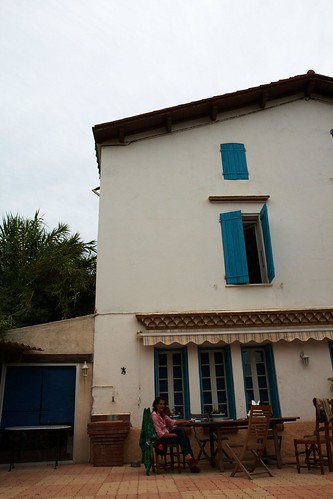
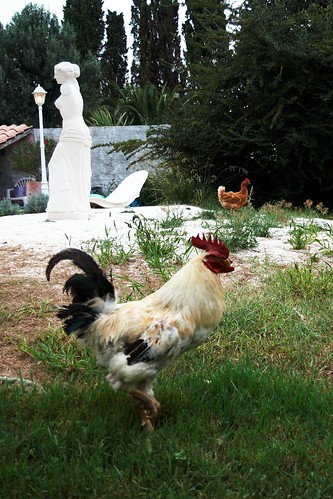
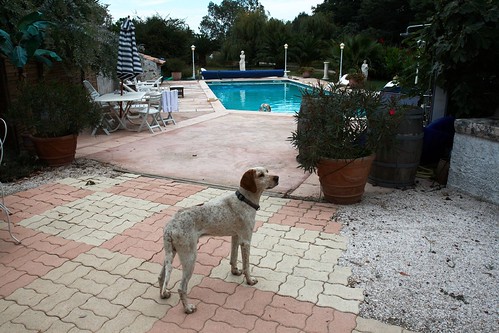
Fortunately, the agency had a house rented out where we were invited to stay, which is nice in a town where the hotels are pretty booked out a year in advance for the event. As interns, there wasn't too much we had to do there. I was pretty much there to enjoy it and absorb as much as I could; which was good, since I felt pretty tired and drained going in.
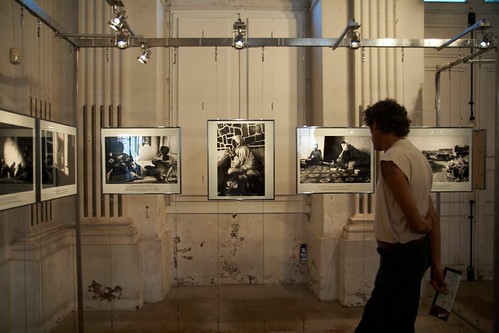
I didn't do much at all there. I checked out some of the photo exhibits, checked out some of the evening screenings, and attended one of the panels. I probably should have attended more of the panels; although they dind't seem that interesting, the debates could have been educational.

In retrospect, I could have done some more. Could have studied the exhibits more, could have networked more. I really wasn't in the mood for the latter, and it's hard to throw yourself out there as an advanced hobbyist when everyone else is either a photographer or an agent or an editor. Plus, there were far more ambitious photographers throwing themselves at editors, networking to sell, whereas I have no work to push or to motivate me to chitchat, although I guess I really could have done the "hi, how are you, you have any kids?" kinda smalltalk to at least get to know some people and get my foot in the door.

In the evenings there were photography screenings projected on a huge widescreen. The image was created by six projectors. Each evening would start with a slideshow of the news stories of 2007, broken down into a few months for each evening. After that, various photographers and their stories would be featured.
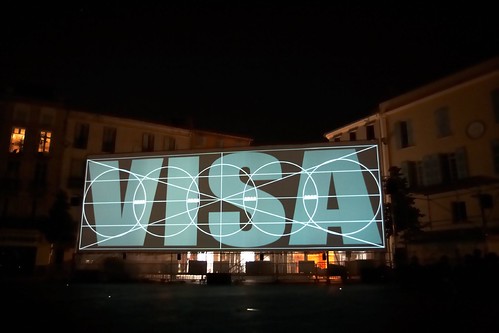
One thing really struck me about the nightly "news" - for a festival that celebrates photojournalism, a profession that idealizes "real news" over "censorship" or simply news pushed by commercial media outlets, there seemed to be a certain filter applied. There was a strong presence of African stories and very little North American, or developed world coverage. Obituaries presented were mostly of musicians, ones that I've never heard of and were probably mostly of interest to people in their 50s or 60s. Few were what I'd consider world news.
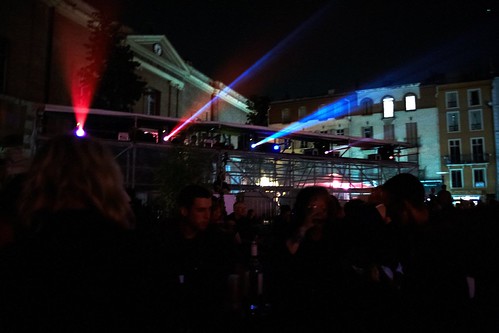
The screening on Friday night was focused on the 20th anniversary of the festival. At the end, the director of the festival, Jean-Francois Leroy, himself was feted and presented a gift of prints from the many photographers who are his friends and have benefitted from the festival.
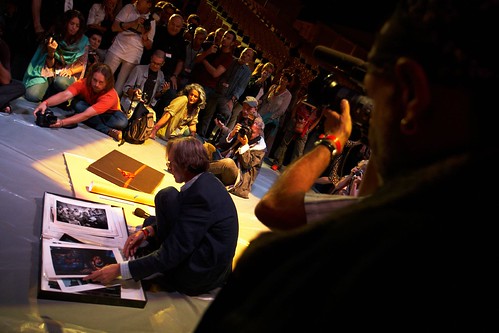
Which brings me to the one thing that I didn't really like about the festival - which, should be taken as an opinion more than a criticism: the professional week has a certain cult of personality to it. There are important people, who all know each other. The festival is the time for them to see each other and catch up with each other. If you're in the clique, you get to hang out and drink with your friends. If not, you're a nobody, left scrounging around the Cafe de la Poste in the evenings in search of other nobodies who are trying to make it as photographers. That's not to say that there aren't friendly photographers, but as a generalization, that's the way it goes. I guess it's the same if you go anywhere where people already know each other and connections are already firm.

One place I lucked out on was to have a front row seat to watch photographer, Philip Blenkinsop, receive the Visa d'Or, one of the three top prizes given at the festival. As an oddity in the history of the festival, the final night's screening and closing party were cancelled due to rain/security, instead Jean-Francois found Philip as he was having dinner and dragged him out onto the street to present him with the award.
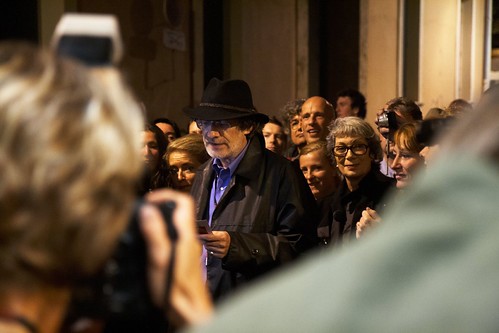

I was a little disappointed at the closing party being cancelled - it was famous for being a good time. I did, however, get to see the tiny closing ceremony, held for the benefit of the organizint staff, which lasted for maybe 20 minutes before everyone returned back to the Cafe de la Poste to hang out until the cafe closed.

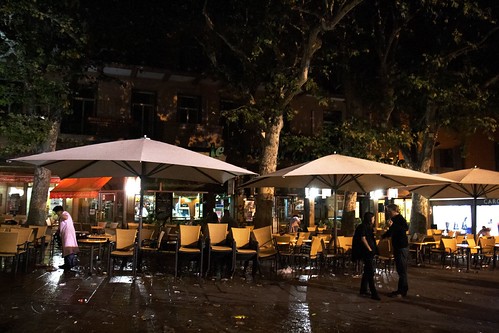



Fortunately, the agency had a house rented out where we were invited to stay, which is nice in a town where the hotels are pretty booked out a year in advance for the event. As interns, there wasn't too much we had to do there. I was pretty much there to enjoy it and absorb as much as I could; which was good, since I felt pretty tired and drained going in.

I didn't do much at all there. I checked out some of the photo exhibits, checked out some of the evening screenings, and attended one of the panels. I probably should have attended more of the panels; although they dind't seem that interesting, the debates could have been educational.

In retrospect, I could have done some more. Could have studied the exhibits more, could have networked more. I really wasn't in the mood for the latter, and it's hard to throw yourself out there as an advanced hobbyist when everyone else is either a photographer or an agent or an editor. Plus, there were far more ambitious photographers throwing themselves at editors, networking to sell, whereas I have no work to push or to motivate me to chitchat, although I guess I really could have done the "hi, how are you, you have any kids?" kinda smalltalk to at least get to know some people and get my foot in the door.

In the evenings there were photography screenings projected on a huge widescreen. The image was created by six projectors. Each evening would start with a slideshow of the news stories of 2007, broken down into a few months for each evening. After that, various photographers and their stories would be featured.

One thing really struck me about the nightly "news" - for a festival that celebrates photojournalism, a profession that idealizes "real news" over "censorship" or simply news pushed by commercial media outlets, there seemed to be a certain filter applied. There was a strong presence of African stories and very little North American, or developed world coverage. Obituaries presented were mostly of musicians, ones that I've never heard of and were probably mostly of interest to people in their 50s or 60s. Few were what I'd consider world news.

The screening on Friday night was focused on the 20th anniversary of the festival. At the end, the director of the festival, Jean-Francois Leroy, himself was feted and presented a gift of prints from the many photographers who are his friends and have benefitted from the festival.

Which brings me to the one thing that I didn't really like about the festival - which, should be taken as an opinion more than a criticism: the professional week has a certain cult of personality to it. There are important people, who all know each other. The festival is the time for them to see each other and catch up with each other. If you're in the clique, you get to hang out and drink with your friends. If not, you're a nobody, left scrounging around the Cafe de la Poste in the evenings in search of other nobodies who are trying to make it as photographers. That's not to say that there aren't friendly photographers, but as a generalization, that's the way it goes. I guess it's the same if you go anywhere where people already know each other and connections are already firm.

One place I lucked out on was to have a front row seat to watch photographer, Philip Blenkinsop, receive the Visa d'Or, one of the three top prizes given at the festival. As an oddity in the history of the festival, the final night's screening and closing party were cancelled due to rain/security, instead Jean-Francois found Philip as he was having dinner and dragged him out onto the street to present him with the award.


I was a little disappointed at the closing party being cancelled - it was famous for being a good time. I did, however, get to see the tiny closing ceremony, held for the benefit of the organizint staff, which lasted for maybe 20 minutes before everyone returned back to the Cafe de la Poste to hang out until the cafe closed.


Sep 9, 2008
So simple but so good
I didn't get this from a recipe, so it's probably not authentic, but it's very simple and makes me feel all deutche:
2 supermarket bratwurst (aka braadworst)
a pack of supermarket saurkraut (aka wijnzuurkool)
an onion
a pepper (I got a yellow one)
a bottle of leffe (brune dubbel)
In a 10 or 12 inch frying pan sautee the onions and peppers on high heat until slightly brown. Move them aside in the pan and sear the bratwurst for about 45 seconds, then turn bratwurst over and sear for another 45 seconds.
Pour in beer until the frothing mess covers half the sausage; cover the pan and reduce heat to a simmer until the liquid boils off. It takes about 8 minutes (ok I just made that up, I didn't watch the clock). Add some more beer, as well as the saurkraut, and simmer until mostly dry. Take out the brats and mix the vegetables together.
I got impatient while waiting for the sausages to cook, so I had some warm crusty bread (they sell parbaked bread here that you can finish off yourself at home) with some pate and brie. Having my own kitchen is bad news. This passage comes to mind:
Phil 3:18-21 For, as I have often told you before and now say again even with tears, many live as enemies of the cross of Christ. Their destiny is destruction, their god is their stomach, and their glory is in their shame. Their mind is on earthly things. But our citizenship is in heaven. And we eagerly await a Savior from there, the Lord Jesus Christ, who, by the power that enables him to bring everything under his control, will transform our lowly bodies so that they will be like his glorious body.
2 supermarket bratwurst (aka braadworst)
a pack of supermarket saurkraut (aka wijnzuurkool)
an onion
a pepper (I got a yellow one)
a bottle of leffe (brune dubbel)
In a 10 or 12 inch frying pan sautee the onions and peppers on high heat until slightly brown. Move them aside in the pan and sear the bratwurst for about 45 seconds, then turn bratwurst over and sear for another 45 seconds.
Pour in beer until the frothing mess covers half the sausage; cover the pan and reduce heat to a simmer until the liquid boils off. It takes about 8 minutes (ok I just made that up, I didn't watch the clock). Add some more beer, as well as the saurkraut, and simmer until mostly dry. Take out the brats and mix the vegetables together.
I got impatient while waiting for the sausages to cook, so I had some warm crusty bread (they sell parbaked bread here that you can finish off yourself at home) with some pate and brie. Having my own kitchen is bad news. This passage comes to mind:
Phil 3:18-21 For, as I have often told you before and now say again even with tears, many live as enemies of the cross of Christ. Their destiny is destruction, their god is their stomach, and their glory is in their shame. Their mind is on earthly things. But our citizenship is in heaven. And we eagerly await a Savior from there, the Lord Jesus Christ, who, by the power that enables him to bring everything under his control, will transform our lowly bodies so that they will be like his glorious body.
Sep 7, 2008
Baggage #2
My transfer at Lyon was about an hour, after that I grabbed a local train to Montpellier. I had just decided on Montpellier as a destination on Monday morning. I needed to be in Perpignan on Tuesday, so I had thought about taking an overnight train. It was over $100 more for the overnight train than the regular train, if I took the regular train though, I'd have to stay somewhere overnight. I had considered Lyon, Marseilles and Montpellier, and decided on the last one since it was closest to Perignan, meaning I'd have the most flexibility on getting there on Tuesday.
I intentionally didn't look ahead for accomodations. The plan was to lock up my rolling suitcase and explore the city and see what came up. Unfortunately, upon arriving at 10pm, I discovered there were no lockers available in the train station. Wandering around the area near the train station, I found that pretty much all the hotels were full (not sure why, but it was the day before school started so I suspect that was related), and none of them had lockers. In the end I found a Holiday Inn, where the desk clerk agreed to lock up my suitcase in the storage room, provided that I pick it up before 7am when his shift was over.
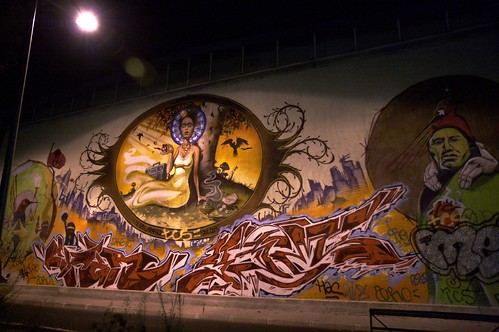
I've found that one of the parts I hate most in travelling is carrying luggage around. It slows you down and drastically limits how far you can go before you're exhausted. Add to that the clumsiness of carrying it around, worrying about theft, and the fact that it marks you out as a vulnerable tourist.
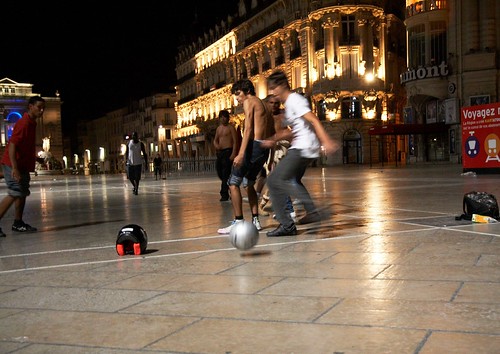
After having stowed the suitcase, I explored the town by foot a bit before jumping on the tram. The first night in Geneva, I had taken the trams around the city to get a feel of the outlying areas and was planning to do the same. Unfortunately the outbound train I took was the last one. It was about 1am when I got to the end of the line, and there were no returning trams. It took me about 4 hours to walk back to the train station. The trip included a couple of short naps on park bences along the way, and meeting a bunch of guys playing football in the empty square at the center of the city at 4:30am. It got colder than I expected, so I was glad to get back to the station, where I found other travellers sleeping for the night. If I had to have carried the suitcase through the night, it would have been pretty miserable, but as it was, it was only tiring (and my feet hurt after).
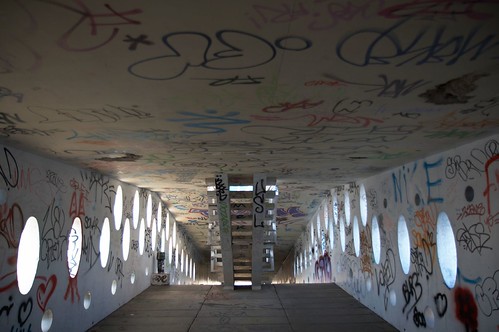
The next morning I first took a bus to the sea, took a few photos, and then bussed back wandered around the city a little more, when I ran into two dutch tourists that I happened to see the night before. It was interesting that they were photographers, so I hung around with them as they explored the town. Ultimiately it wasn't the best decision; because of them I missed the train I was planning on taking to Perpignan (which meant a lot more walking when I got there since I then didn't have a ride to the house I was staying at).
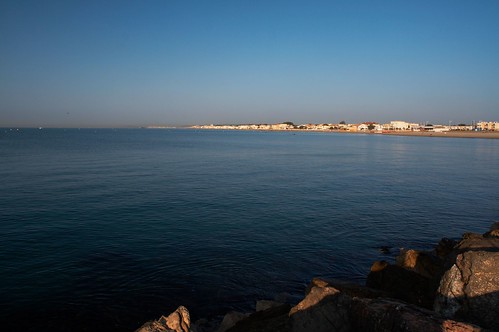
The more vocal of the two dutch guys proved to be arrogant, opinionated and ignorant, a combination I find downright unbearable. It's something I pretty much guessed at, but maybe I was too generous in not making early judgements. Maybe this is too harsh, but then maybe the lesson to be learned is to trust my judgement and not waste time with the wrong people who will drag me down.
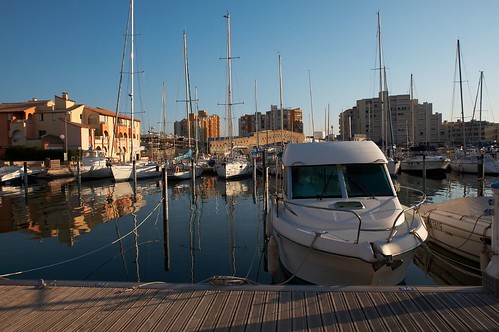
On an absolutely unrelated note, I gotta learn to sail.
I intentionally didn't look ahead for accomodations. The plan was to lock up my rolling suitcase and explore the city and see what came up. Unfortunately, upon arriving at 10pm, I discovered there were no lockers available in the train station. Wandering around the area near the train station, I found that pretty much all the hotels were full (not sure why, but it was the day before school started so I suspect that was related), and none of them had lockers. In the end I found a Holiday Inn, where the desk clerk agreed to lock up my suitcase in the storage room, provided that I pick it up before 7am when his shift was over.

I've found that one of the parts I hate most in travelling is carrying luggage around. It slows you down and drastically limits how far you can go before you're exhausted. Add to that the clumsiness of carrying it around, worrying about theft, and the fact that it marks you out as a vulnerable tourist.

After having stowed the suitcase, I explored the town by foot a bit before jumping on the tram. The first night in Geneva, I had taken the trams around the city to get a feel of the outlying areas and was planning to do the same. Unfortunately the outbound train I took was the last one. It was about 1am when I got to the end of the line, and there were no returning trams. It took me about 4 hours to walk back to the train station. The trip included a couple of short naps on park bences along the way, and meeting a bunch of guys playing football in the empty square at the center of the city at 4:30am. It got colder than I expected, so I was glad to get back to the station, where I found other travellers sleeping for the night. If I had to have carried the suitcase through the night, it would have been pretty miserable, but as it was, it was only tiring (and my feet hurt after).

The next morning I first took a bus to the sea, took a few photos, and then bussed back wandered around the city a little more, when I ran into two dutch tourists that I happened to see the night before. It was interesting that they were photographers, so I hung around with them as they explored the town. Ultimiately it wasn't the best decision; because of them I missed the train I was planning on taking to Perpignan (which meant a lot more walking when I got there since I then didn't have a ride to the house I was staying at).

The more vocal of the two dutch guys proved to be arrogant, opinionated and ignorant, a combination I find downright unbearable. It's something I pretty much guessed at, but maybe I was too generous in not making early judgements. Maybe this is too harsh, but then maybe the lesson to be learned is to trust my judgement and not waste time with the wrong people who will drag me down.

On an absolutely unrelated note, I gotta learn to sail.
Sep 4, 2008
Baggage #1
On Monday I took the train from Geneva, Switzerland, to Montpellier, France, which involved a stop to change trains in Lyon, France. On the train to Lyon, I saw a black woman on a train, carrying her three kids. She looked tall, slender and strong as she tried to manage two toddlers and a baby at once by herself. Initially she didn't find all the seats together and put the two toddlers in one car, and sat in the next car and watched them through a window. I watched first as she efficiently changed three diapers, and then filled three baby bottles from a bottle of juice while holding the baby.
I felt a little bad for her, trying to watch over the three kids. At moments I felt like offering to help, but I always have this sense that unsolicited may be unwelcome, especially with protective mothers and their children. Maybe it's just the way I don't necessarily feel like I need people to offer me assistance most of the time. The daughter, one of the two toddlers, at first seemed quite capable of taking care of her younger brother as they sat together in the other car. Later though, as seats freed up and she came back to sit with her mother, she seemed a little out of it, first slipping on the seat as she was moving across it, and banging her head against the train wall, and again later falling off the seat completely and landing on her butt. I suspect they must have been having a long trip, since her brother was nodding off with a baby bottle in his mouth, occasionally jerking up to hold the bottle, but not sucking anything out of it.
As I got off the train, I felt a little uneasy as everyone rushed off and the woman packed her stuff and got her kids in tow. I hung around to watch, just to make sure she and her kids all got off the train. The mother got off, carrying the baby and her luggage, and looked around the platform for someone as her toddler boy stumbled off the train in a half-awake daze. The clumsy sister also stumbled off the train, and at first stepped in the crack between the train and the platform, and then fell all the way through the crack probably bumping her head and limbs against the train and platform on the way down.
I rushed over as the mom started screaming. Another woman who was just beside the train had gotten on her knees as well, and together we reached down and grabbed the girl and pulled her up, as some men stood in the train's doorway to make sure it didn't close and the train didn't move. The tracks and gravel were only about three feet down below the platform, but it was a fairly big fall I think, when the girl was much shorter than that. We managed to pull her up quickly, and returned her to the distressed mother. A station employee had been summoned and came over and checked the girls head, and a crowd gathered.
I have no idea if the station employee had any medical training, but since the woman seemed to be taken care of by plenty of native french speakers, I just went on my way. Later I saw her two boys leaving with a couple of other people that I had noticed with her on the platform. I guess the woman probably went to take care of her daughter.
I ended up feeling bad for the woman (and considering perhaps that I should have been helping her kids off the train instead of merely watching). At the same time though, it seemed almost inevitable that some sort of accident would happen considering that the woman had her hands full with luggage and two toddlers running around. It seems almost negligent to allow your children to stumble off the train by themselves. She could have put her luggage down off the train first and then helped each kid out, or vice versa. While I may be rather insensitive, it seems almost foolish to even attempt to travel alone with three small children given all the things that could go wrong. I find it difficult enough to travel around alone and keep my eye on my belongings, having three children that move around would be next to impossible. It seems like the type of situation that would require far more careful planning. I understand that perhaps this woman may have had no choice. If that were the case it must be a difficult life to have to carry around all that baggage.
I felt a little bad for her, trying to watch over the three kids. At moments I felt like offering to help, but I always have this sense that unsolicited may be unwelcome, especially with protective mothers and their children. Maybe it's just the way I don't necessarily feel like I need people to offer me assistance most of the time. The daughter, one of the two toddlers, at first seemed quite capable of taking care of her younger brother as they sat together in the other car. Later though, as seats freed up and she came back to sit with her mother, she seemed a little out of it, first slipping on the seat as she was moving across it, and banging her head against the train wall, and again later falling off the seat completely and landing on her butt. I suspect they must have been having a long trip, since her brother was nodding off with a baby bottle in his mouth, occasionally jerking up to hold the bottle, but not sucking anything out of it.
As I got off the train, I felt a little uneasy as everyone rushed off and the woman packed her stuff and got her kids in tow. I hung around to watch, just to make sure she and her kids all got off the train. The mother got off, carrying the baby and her luggage, and looked around the platform for someone as her toddler boy stumbled off the train in a half-awake daze. The clumsy sister also stumbled off the train, and at first stepped in the crack between the train and the platform, and then fell all the way through the crack probably bumping her head and limbs against the train and platform on the way down.
I rushed over as the mom started screaming. Another woman who was just beside the train had gotten on her knees as well, and together we reached down and grabbed the girl and pulled her up, as some men stood in the train's doorway to make sure it didn't close and the train didn't move. The tracks and gravel were only about three feet down below the platform, but it was a fairly big fall I think, when the girl was much shorter than that. We managed to pull her up quickly, and returned her to the distressed mother. A station employee had been summoned and came over and checked the girls head, and a crowd gathered.
I have no idea if the station employee had any medical training, but since the woman seemed to be taken care of by plenty of native french speakers, I just went on my way. Later I saw her two boys leaving with a couple of other people that I had noticed with her on the platform. I guess the woman probably went to take care of her daughter.
I ended up feeling bad for the woman (and considering perhaps that I should have been helping her kids off the train instead of merely watching). At the same time though, it seemed almost inevitable that some sort of accident would happen considering that the woman had her hands full with luggage and two toddlers running around. It seems almost negligent to allow your children to stumble off the train by themselves. She could have put her luggage down off the train first and then helped each kid out, or vice versa. While I may be rather insensitive, it seems almost foolish to even attempt to travel alone with three small children given all the things that could go wrong. I find it difficult enough to travel around alone and keep my eye on my belongings, having three children that move around would be next to impossible. It seems like the type of situation that would require far more careful planning. I understand that perhaps this woman may have had no choice. If that were the case it must be a difficult life to have to carry around all that baggage.
Aug 31, 2008
Solitude
A reminder to self. Being alone doesn't mean you're experience the benefits of solitude. You can be alone yet easily to busy and preoccupied to meditate and reflect, to know yourself and evaluate your strengths and failures, to know what you need and what you want, to know where you stand ethically and morally, to know how far you are from God.
On the other hand, time spent with others does not preclude being able to set aside some time, even a moment, between yourself and something great.

On the other hand, time spent with others does not preclude being able to set aside some time, even a moment, between yourself and something great.

Aug 30, 2008
Geneva, day 1
Aug 28, 2008
I need an excuse.
I haven't posted up the photos from Budapest two weekends ago. Or the ones from the beach at Zandvoort aan Zee last weekend. How long will it be till I get the pics up from Geneve this weekend, or Perpignan next week?
Aug 19, 2008
Chez moi
The problem with getting into a routine is that you get unmotivated. Instead of striving forward and pushing yourself, you get comfortable and lazy. Instead of planning ahead and thinking of a meal for dinner, I just end up buying whatever looks good at the supermarket and combining it with whatever I had in the fridge. Usually I make it work, but I have to admit, while being edible and tasty, it's hardle restaurant quality.
Today's supermarket haul: belgian endives, haricots verts, cooked crawfish.
What was in the fish: sausage that looks like kielbasa (but tastes like spam), arugula, a block of parmesan reggiano.
Sitting on the counter: basil plant.
1. Boil haricots verts for about 3 minutes, then toss in ice water to maintain colour.
2. Peel belgian endive leaves.
3. Chop up belgian endive hearts and spam-sausage. Chop up or grate parmesan. Chiffonade 5 or 6 basil leaves.
4. Sautee chopped up endive hearts and spam-sausage, flavour with salt, pepper, paprika, oregano and thyme in olive oil.
5. Toss cooked crawfish into sautee.
6. When chopped up endive hearts are browned and spam-sausage is crisped, turn off heat.
7. Toss haricots verts, endive leaves, arugula, parmesan and basil in pan, along with a splash of balsamic vinegar.
8. Serve salad with a tall glass of acai and passionfruit juice (preferably generously spiked with export strength Tanqueray).
To be honest, it would have been pretty damn good if it wasn't for the spam-sausage. I should have known better than to keep it around. Maybe if I have visitors, I'll be smart enough to toss out anything spam-flavoured from my fridge (hint hint).

Today's supermarket haul: belgian endives, haricots verts, cooked crawfish.
What was in the fish: sausage that looks like kielbasa (but tastes like spam), arugula, a block of parmesan reggiano.
Sitting on the counter: basil plant.
1. Boil haricots verts for about 3 minutes, then toss in ice water to maintain colour.
2. Peel belgian endive leaves.
3. Chop up belgian endive hearts and spam-sausage. Chop up or grate parmesan. Chiffonade 5 or 6 basil leaves.
4. Sautee chopped up endive hearts and spam-sausage, flavour with salt, pepper, paprika, oregano and thyme in olive oil.
5. Toss cooked crawfish into sautee.
6. When chopped up endive hearts are browned and spam-sausage is crisped, turn off heat.
7. Toss haricots verts, endive leaves, arugula, parmesan and basil in pan, along with a splash of balsamic vinegar.
8. Serve salad with a tall glass of acai and passionfruit juice (preferably generously spiked with export strength Tanqueray).
To be honest, it would have been pretty damn good if it wasn't for the spam-sausage. I should have known better than to keep it around. Maybe if I have visitors, I'll be smart enough to toss out anything spam-flavoured from my fridge (hint hint).

Aug 11, 2008
As Usual, Time Flies
I had a constant sense of unease during the first week here, trying to figure out how to get around a new city, not knowing where I'll live, and being unsure of whether my luggage would still be there when I got back from work. The second week was quite the opposite though; it surprised me how quickly I got into a routine. The weekdays on the past week have flown by.
I try to leave the house by 9:30am, it's a 25 minute walk to work to get there by 10. I've been leaving work around 7pm, and by the time I walk home, buy groceries, make dinner, and clean up, the day's pretty much over. I found a climbing gym, so a couple of nights were spent climbing (kinda expensive at 9 euro to boulder for an evening). Wednesday night was home group night from one of the two churches. after a week I hadn't had time to start working on the side project I had wanted to work on at home, and I've barely gotten through processing photos or updating the blog.
So I've been meaning to put up photos of the apartment for a while:
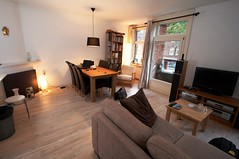
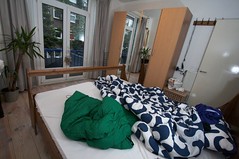



It's pretty roomy 1 bedroom, and fully stocked with IKEA furniture. The kitchen is pretty well stocked with IKEA kitchenware, and has a decent spice rack too. I'm pretty much set for visitors, in case anyone wants to come by.
Things here are definitely more expensive than the US. I'm feeling it but I'm trying not to do the currency conversion in my head. One of the cheapest meals I've found is a "turkish pizza", a round flatbread with some toppings (ie spinach & feta), covered with some sauces and condiments and rolled up. They can be had for as low as 2 euro. A bagel with cream cheese goes for around 3 euro. Falafel sandwiches are usually a little under 4 euro, shwarma sandwiches are usually around 5 euro. These constitue the majority of the cheap fast food. The cheapest sit down meal I've had was a 10 euro quarter chicken with fries and salad.
Drinks and juices tend to be fairly pricey. A 500 ml bottle of pop at a corner store tends to go for about 2 euro, a 350 ml beer around 2.30 euro, a coffee at a cafe around 3 euro, a large fresh orange juice around 4 euro.
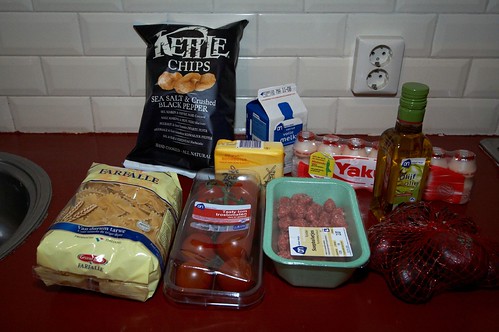
I'm hoping to save at least a little by eating in more. Here's a sample of my first grocery trip (click through for prices), and the price of a meal of pasta comes out to about 4 euro. Right now though, I think I'm spending a lot more on snacks than on meals themselves. For example, Kettle Chips are 2 euro for a 150g bag, and a pint of Haagen-Dazs went for 6 euro. The Kettle Chips here are made in the UK, and they're far less crispy and crunchy as the US version. They're also a lot less tasty. I don't think I'll be getting any more.
I've also noticed that they don't seem to have baking soda here, I don't know how they get rid of fridge smells.
I try to leave the house by 9:30am, it's a 25 minute walk to work to get there by 10. I've been leaving work around 7pm, and by the time I walk home, buy groceries, make dinner, and clean up, the day's pretty much over. I found a climbing gym, so a couple of nights were spent climbing (kinda expensive at 9 euro to boulder for an evening). Wednesday night was home group night from one of the two churches. after a week I hadn't had time to start working on the side project I had wanted to work on at home, and I've barely gotten through processing photos or updating the blog.
So I've been meaning to put up photos of the apartment for a while:





It's pretty roomy 1 bedroom, and fully stocked with IKEA furniture. The kitchen is pretty well stocked with IKEA kitchenware, and has a decent spice rack too. I'm pretty much set for visitors, in case anyone wants to come by.
Things here are definitely more expensive than the US. I'm feeling it but I'm trying not to do the currency conversion in my head. One of the cheapest meals I've found is a "turkish pizza", a round flatbread with some toppings (ie spinach & feta), covered with some sauces and condiments and rolled up. They can be had for as low as 2 euro. A bagel with cream cheese goes for around 3 euro. Falafel sandwiches are usually a little under 4 euro, shwarma sandwiches are usually around 5 euro. These constitue the majority of the cheap fast food. The cheapest sit down meal I've had was a 10 euro quarter chicken with fries and salad.
Drinks and juices tend to be fairly pricey. A 500 ml bottle of pop at a corner store tends to go for about 2 euro, a 350 ml beer around 2.30 euro, a coffee at a cafe around 3 euro, a large fresh orange juice around 4 euro.

I'm hoping to save at least a little by eating in more. Here's a sample of my first grocery trip (click through for prices), and the price of a meal of pasta comes out to about 4 euro. Right now though, I think I'm spending a lot more on snacks than on meals themselves. For example, Kettle Chips are 2 euro for a 150g bag, and a pint of Haagen-Dazs went for 6 euro. The Kettle Chips here are made in the UK, and they're far less crispy and crunchy as the US version. They're also a lot less tasty. I don't think I'll be getting any more.
I've also noticed that they don't seem to have baking soda here, I don't know how they get rid of fridge smells.
Aug 4, 2008
Settled In
I have this syndrome that whenever I actually sit down to write a blog, my mind goes blank and I can't think of what to write about.
I could start and write about hanging out in Toronto with friends. I had planned to drop by for a couple of days and not do anything but relax, but I ended up filling up the schedule randomly, meeting up with high school friends I haven't seen in over a decade, and friends who just happened to be visiting from Hong Kong.
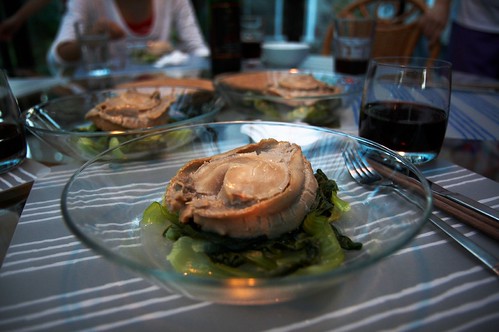
Or I could write about going to Jason's wedding and seeing University friends I haven't seen in seven years.

Or I guess I could talk about flying to Amsterdam and looking for an apartment on the day I arrived, and how after looking at 3 rooms, I picked (the wrong) one. The guy renting the place bailed. Staying in the hostel for the first few days really wasn't too bad. The worst part was the fact that I had two suitcases and I constantly had to stuff everything back in them and make sure they were locked up properly every day. If I had fewer belongings, it wouldn't have felt as difficult.

I could write about giving up in frustration and calling up the rental agency I had called while in California, but which I dismissed because of the price. I think maybe it just indicates how spoiled I am in just throwing money at the problem and getting myself an apartment. It's not quite as central a location as I initially wanted, but it's fully furnished, and more than large enough to have visitors, and it's actually within walking distance to work.

Oh that reminds me, the one thing I thought I'd write about was that both churches I checked out on Sunday (after staying up way too late on Saturday) ended up playing the same song to close the service. They must really like this song here.
Blessed be your name
In the land that is plentiful
Where the streams of abundance flow
Blessed be your name
Blessed be your name
When I'm found in the desert place
Though I walk through the wilderness
Blessed be your name
Every blessing you pour out,
I turn back to praise
When the darkness closes in, Lord
Still I will say...
Blessed be the name of the Lord
Blessed be your name
I could start and write about hanging out in Toronto with friends. I had planned to drop by for a couple of days and not do anything but relax, but I ended up filling up the schedule randomly, meeting up with high school friends I haven't seen in over a decade, and friends who just happened to be visiting from Hong Kong.

Or I could write about going to Jason's wedding and seeing University friends I haven't seen in seven years.

Or I guess I could talk about flying to Amsterdam and looking for an apartment on the day I arrived, and how after looking at 3 rooms, I picked (the wrong) one. The guy renting the place bailed. Staying in the hostel for the first few days really wasn't too bad. The worst part was the fact that I had two suitcases and I constantly had to stuff everything back in them and make sure they were locked up properly every day. If I had fewer belongings, it wouldn't have felt as difficult.

I could write about giving up in frustration and calling up the rental agency I had called while in California, but which I dismissed because of the price. I think maybe it just indicates how spoiled I am in just throwing money at the problem and getting myself an apartment. It's not quite as central a location as I initially wanted, but it's fully furnished, and more than large enough to have visitors, and it's actually within walking distance to work.

Oh that reminds me, the one thing I thought I'd write about was that both churches I checked out on Sunday (after staying up way too late on Saturday) ended up playing the same song to close the service. They must really like this song here.
Blessed be your name
In the land that is plentiful
Where the streams of abundance flow
Blessed be your name
Blessed be your name
When I'm found in the desert place
Though I walk through the wilderness
Blessed be your name
Every blessing you pour out,
I turn back to praise
When the darkness closes in, Lord
Still I will say...
Blessed be the name of the Lord
Blessed be your name
Subscribe to:
Posts (Atom)
